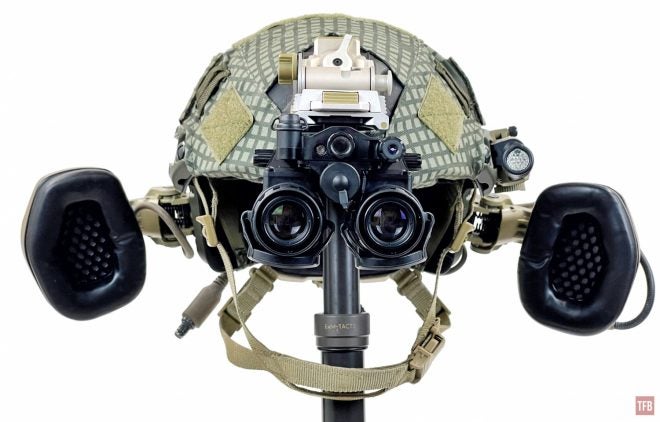Welcome back to another weekly installment of Friday Night Lights. This week we take a look at something relatively new and yet old at the same time. The EOTech BinoNV-C. It is a lightweight articulated binocular offered by EOTech. There are some interesting things going on regarding this which we will go into in this article.
Dual Tube @ TFB:
- Friday Night Lights: ABNV RPNVG – Ruggedized Panning Night Vision Goggle
- Friday Night Lights: Dual Tube Spotlight – Fenn ANVIS WFOV And They Can Explode!
- Friday Night Lights: Dual Tube Spotlight – Elbit F5032 SBNVG/PVS-31D
EOTech Night Vision
So for those of you who have not been paying attention to the Night Vision world, EOTech used to be owned by L3Harris. However, they have since parted ways. At last SHOT Show in January, I noticed this promotional poster in the hallway of the Sands Expo. It was odd that the rifle does not have any aiming device other than the STORM laser range finder.
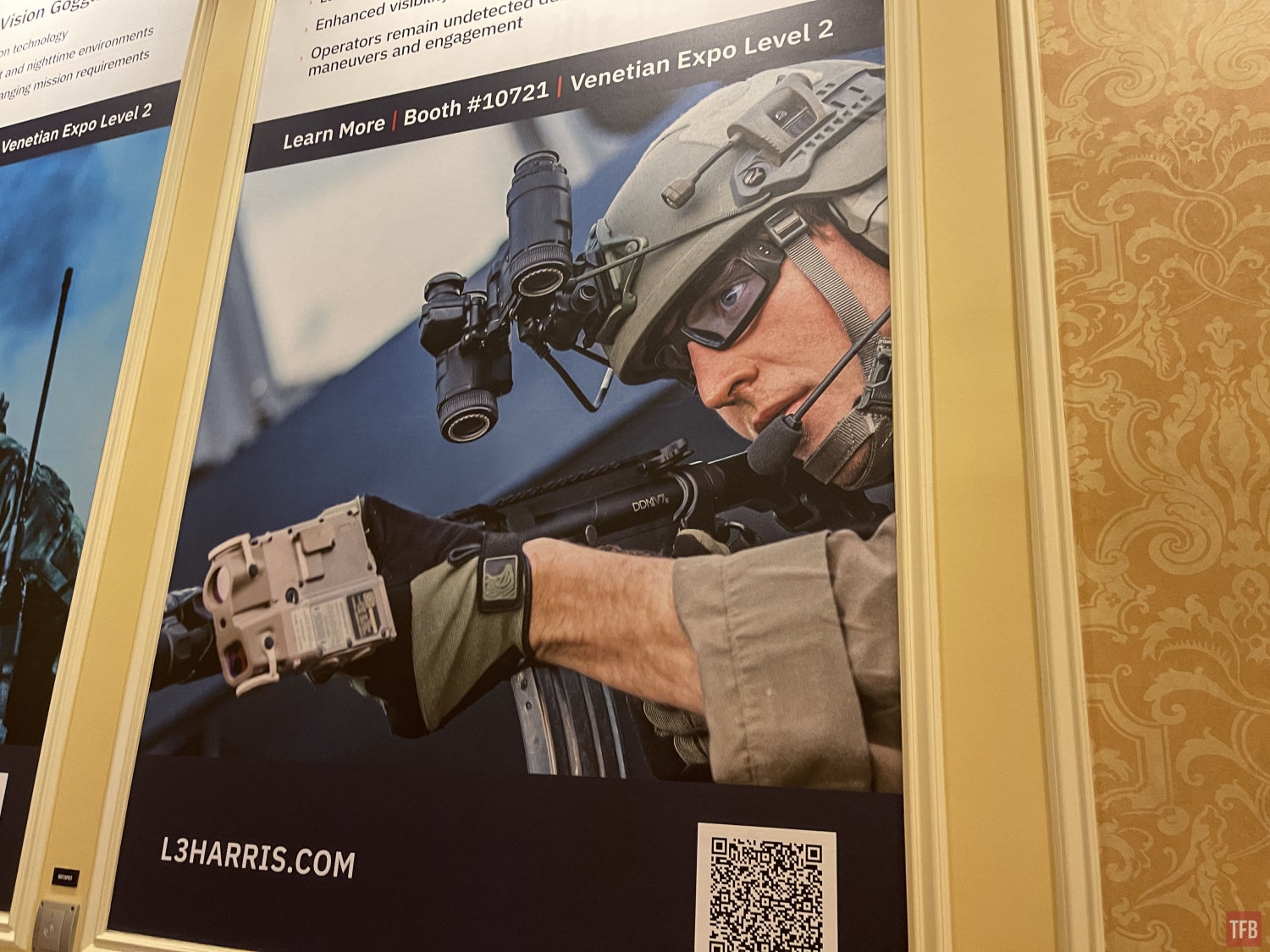
My friend J.W. pointed out that the EOTech must have have been removed because on the L3Harris website, the same image has an EOTech weapon sight.

This is not uncommon in the corporate world; when collaborations dissolve, marketing materials are often adjusted to reflect the current state of affairs.
At SHOT Show I went to the EOTech booth and saw they are offering night vision. Before EOTech only made weapon sights and helped Insight/L3 to manufacture some components for the PEQ-15/ATPIAL laser. When I talked to the EOTech representative they showed me their lineup of night vision. I immediately had questions. The housings were Theon Sensor housing, similar to what Elbit was offering. I confirmed with EOTech that they have no love lost with L3 and will be using Elbit Systems USA image intensifier tubes. That seems odd since Elbit is selling the exact same thing. However, there was one new goggle that is not offered by Elbit and that is the one EOTech calls the BinoNV-C.
EOTech BinoNV-C
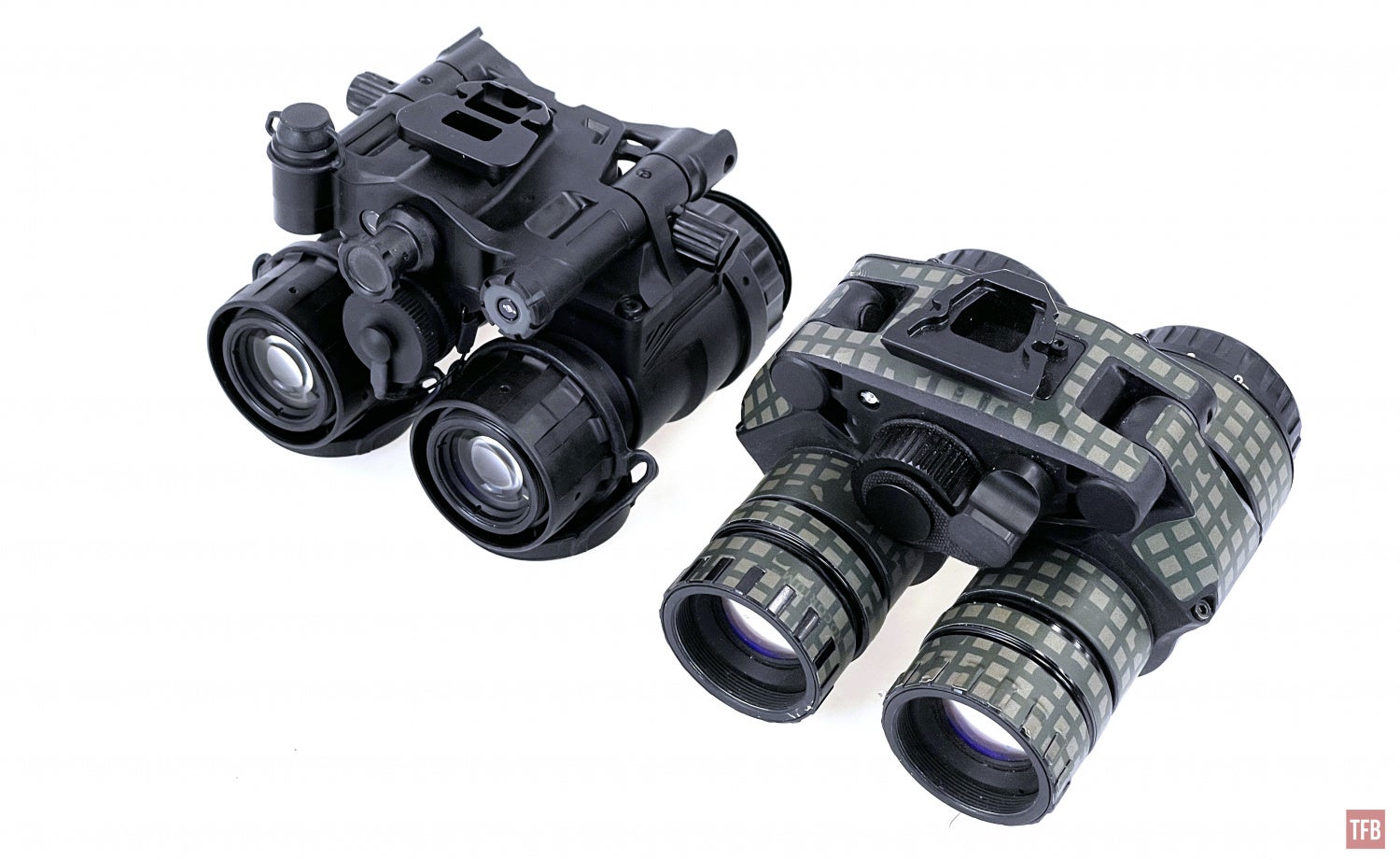
This looks a lot like the Theon Sensors Mikron-D. It uses 16mm image intensifiers rather than the typical 18mm tubes by Elbit and L3Harris. Since it uses 16mm tubes, it is using Photonis Echo tubes. Photonis is the only company that makes 16mm tubes at the moment. According to EOTech, the BinoNV-C is guaranteed to have a minimum FOM of 2,000. In fact, the spec sheets that came with this unit state the actual FOM is 2084 and 2119.
Using 16mm tubes means the housing can be smaller and lighter. Theon Sensors claims it is the lightest NV binocular. Checking the weight it certainly seems so. With battery, it is 15.2oz.
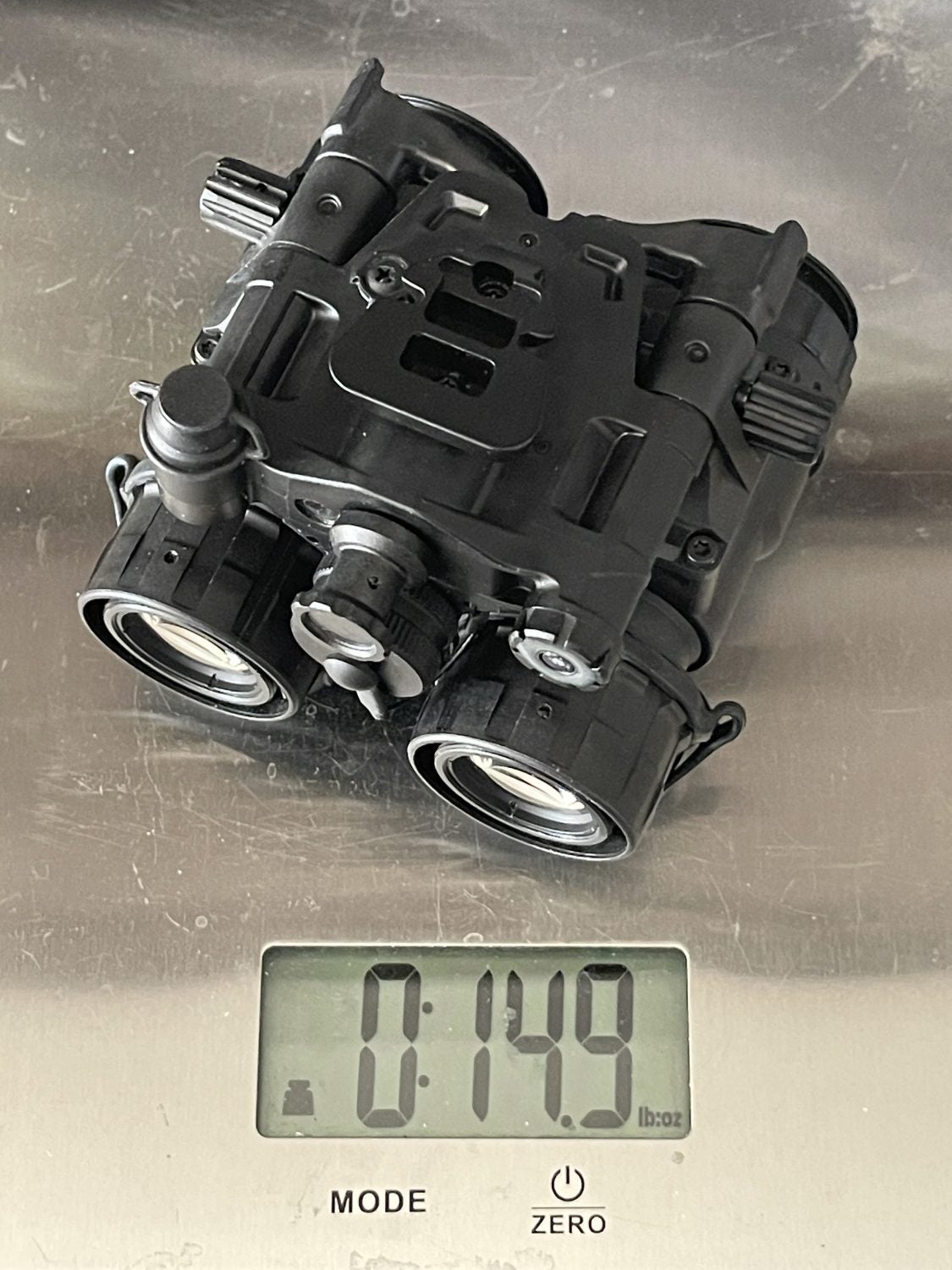
Without battery.
Weapon Outfitters pointed out that the BinoNV-C was so light weight that you do not need a counterweight. Just a set of Ops-Core AMPs and it will balance just fine. So I tried it myself. They were right.
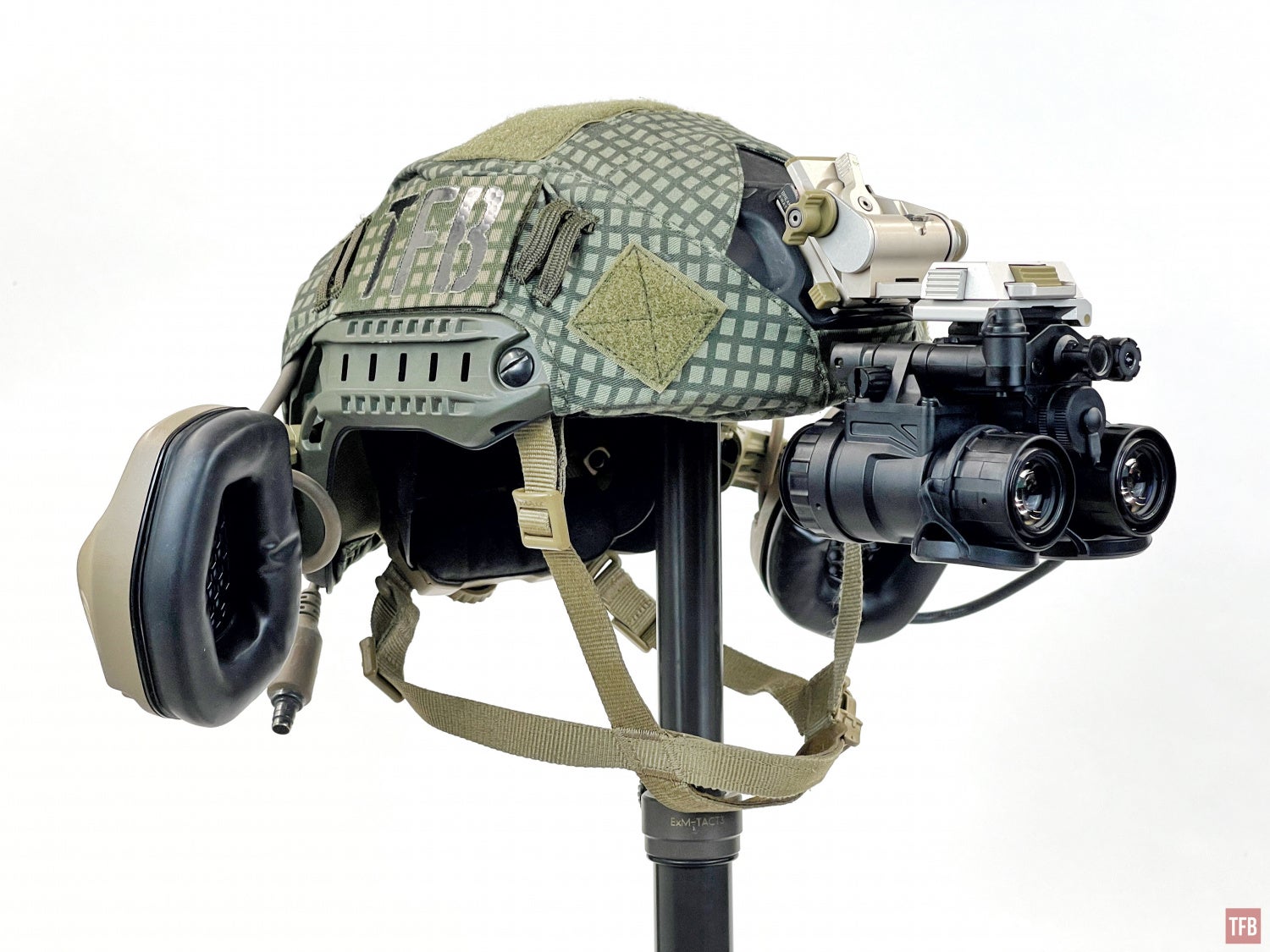
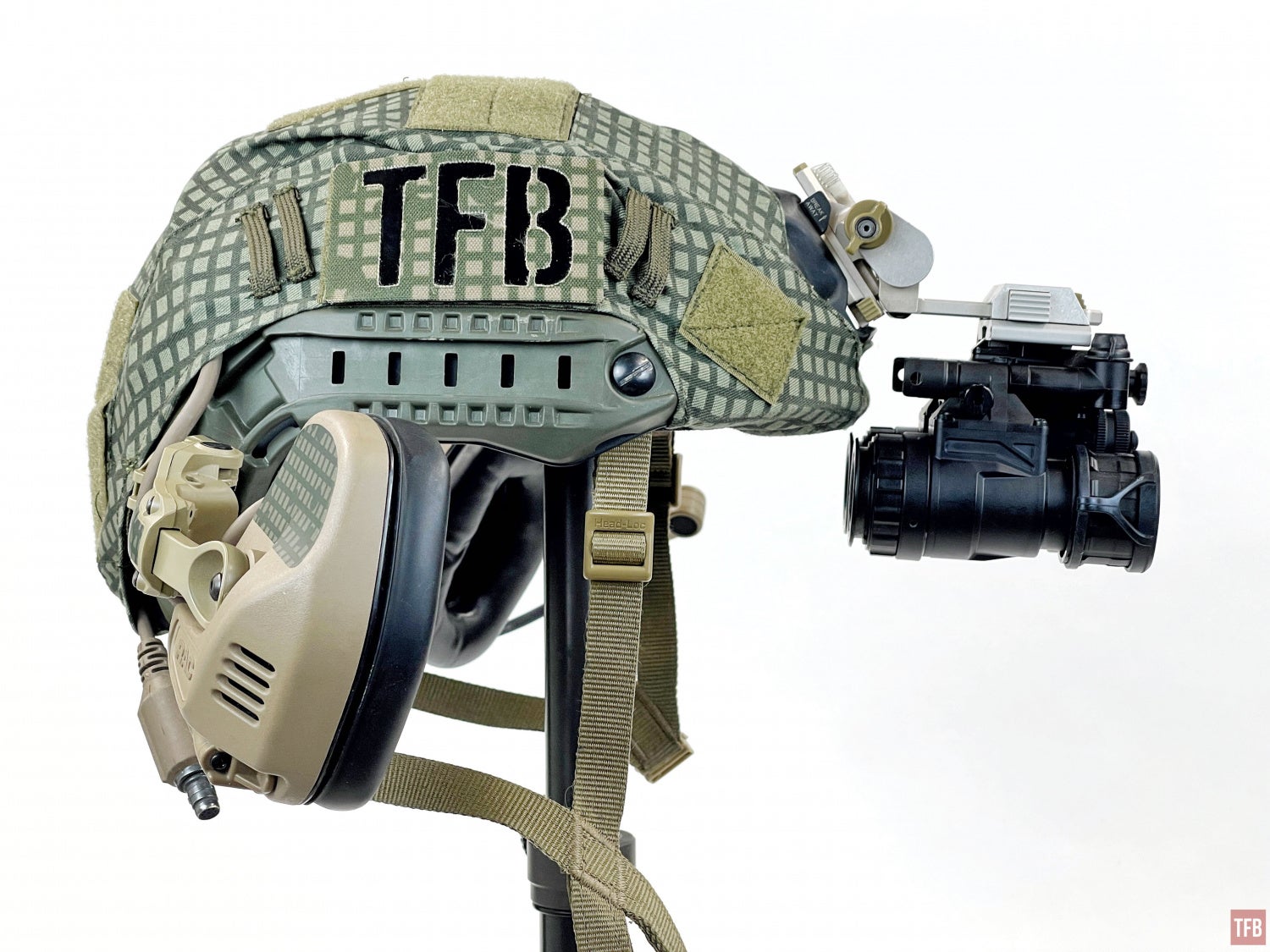
EOTech offers the BinoNV-C with the following:
- EOTECH BinoNV-C
- Quick Start Guide
- Technical Manual
- Eyecup
- Sacrificial Lens
- Wilcox® G24 Helmet Mount
- Lens Cleaning Kit
- Protective Case
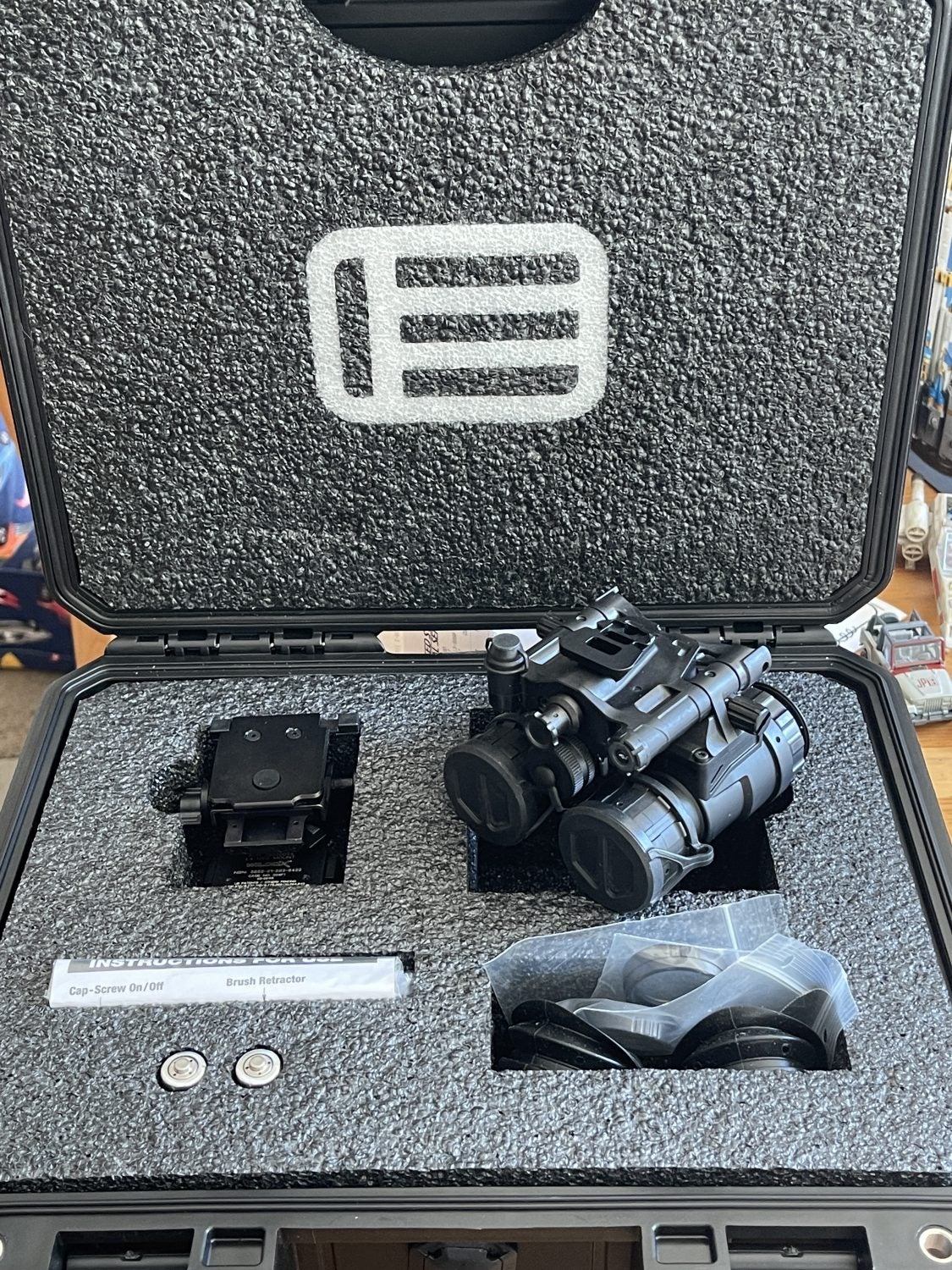
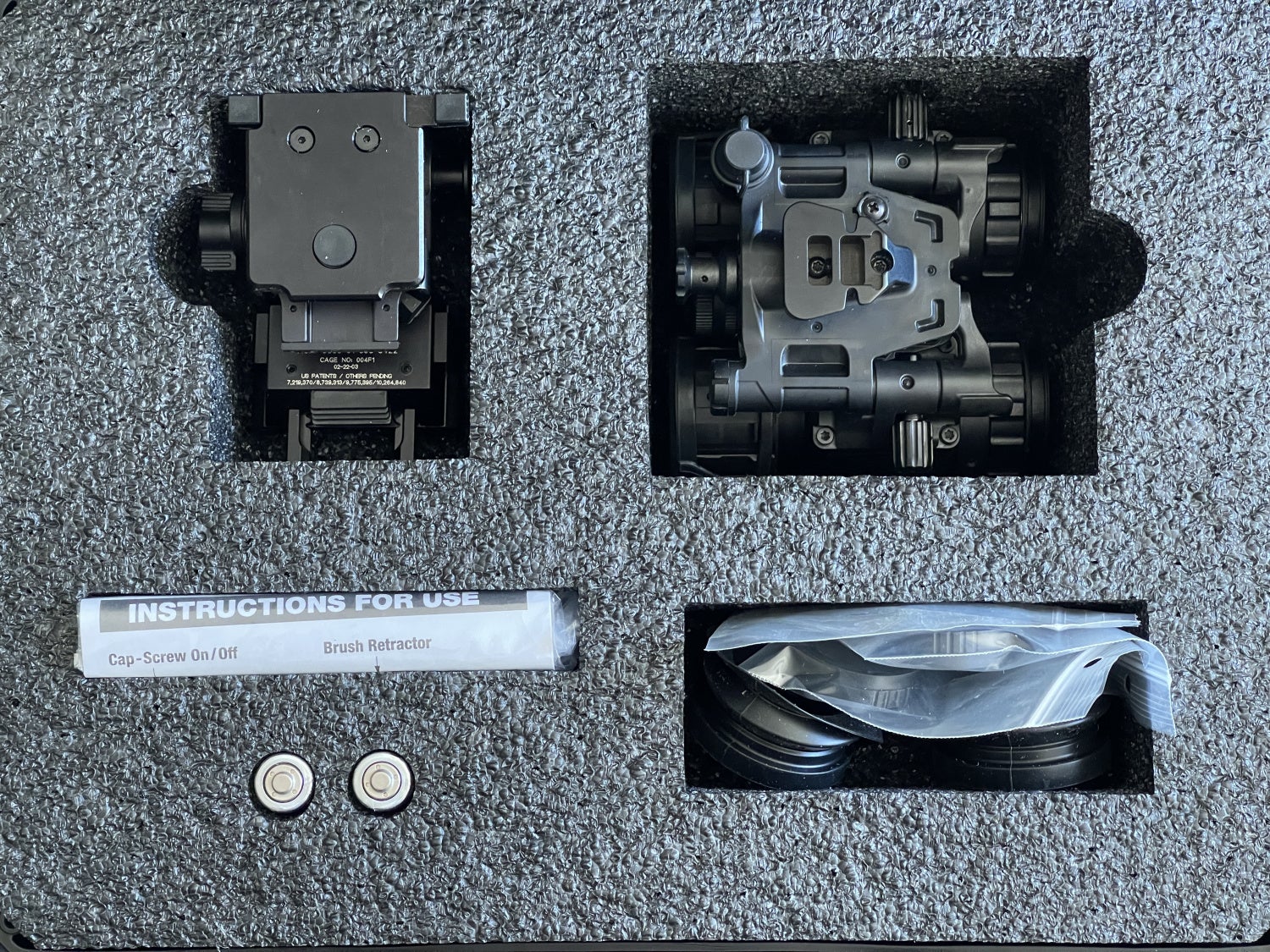
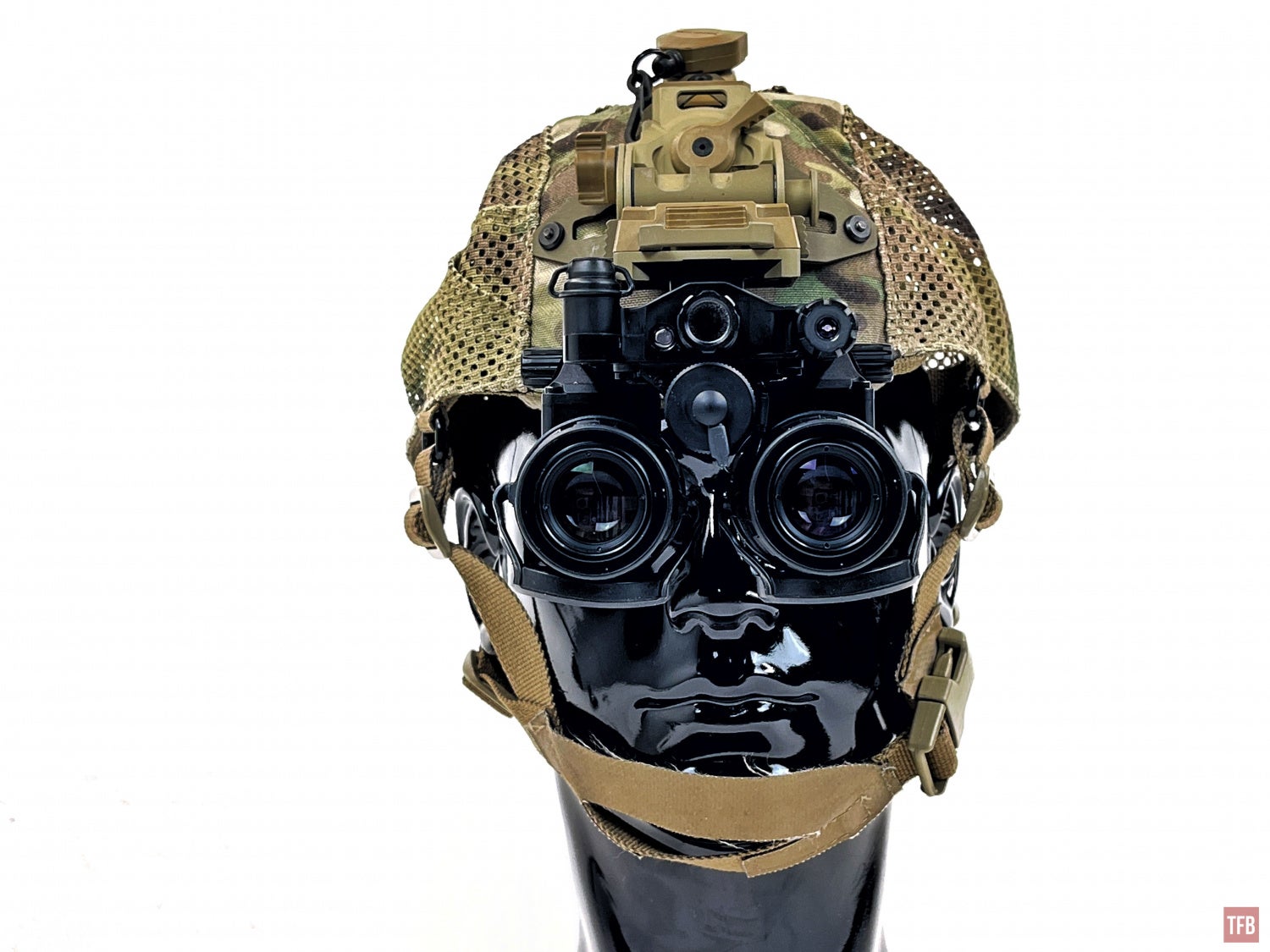
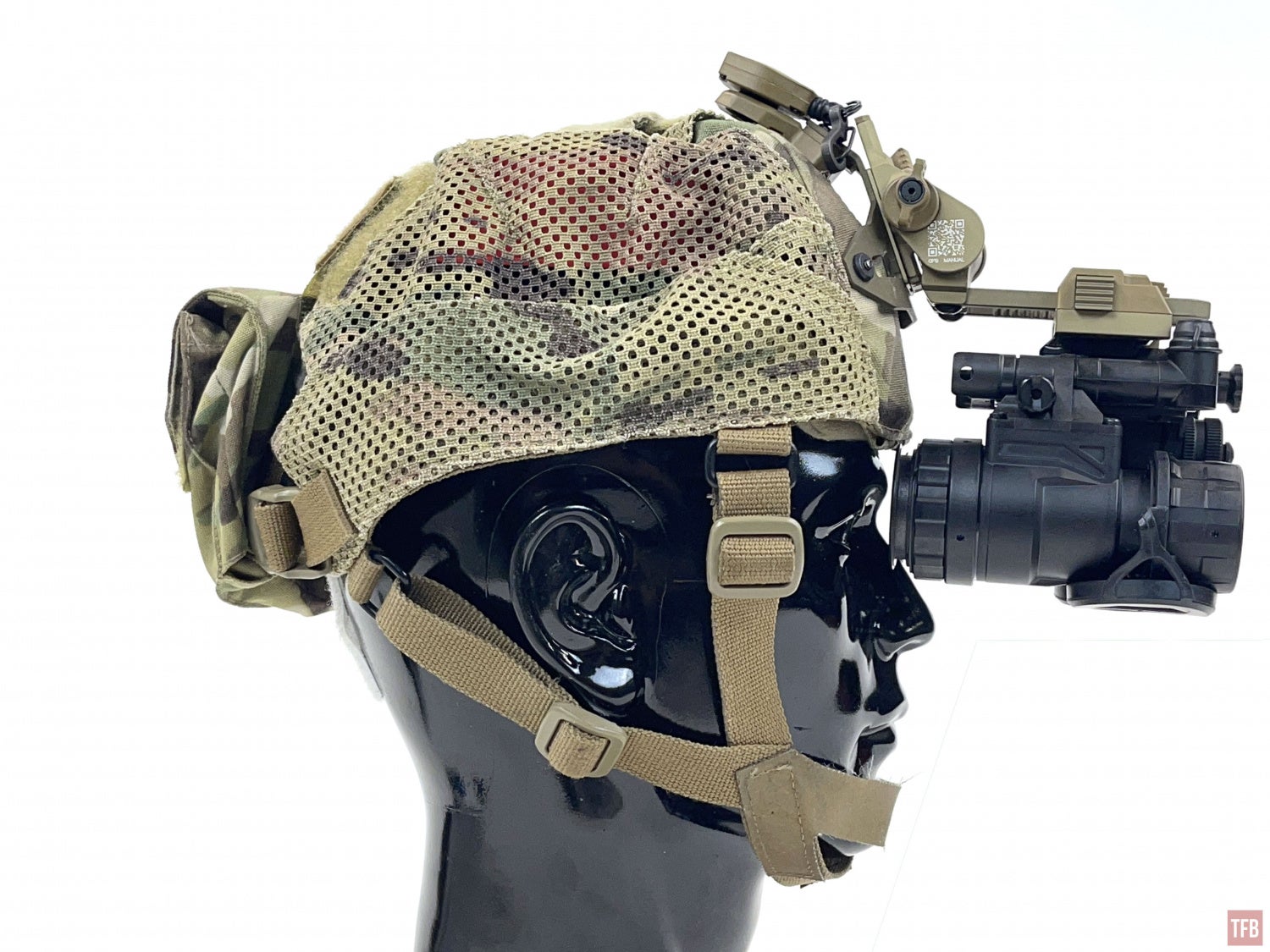
Functionally, the BinoNV-C works just like the Elbit F5032. The pods articulate and they have a power shutoff when you roll them up.
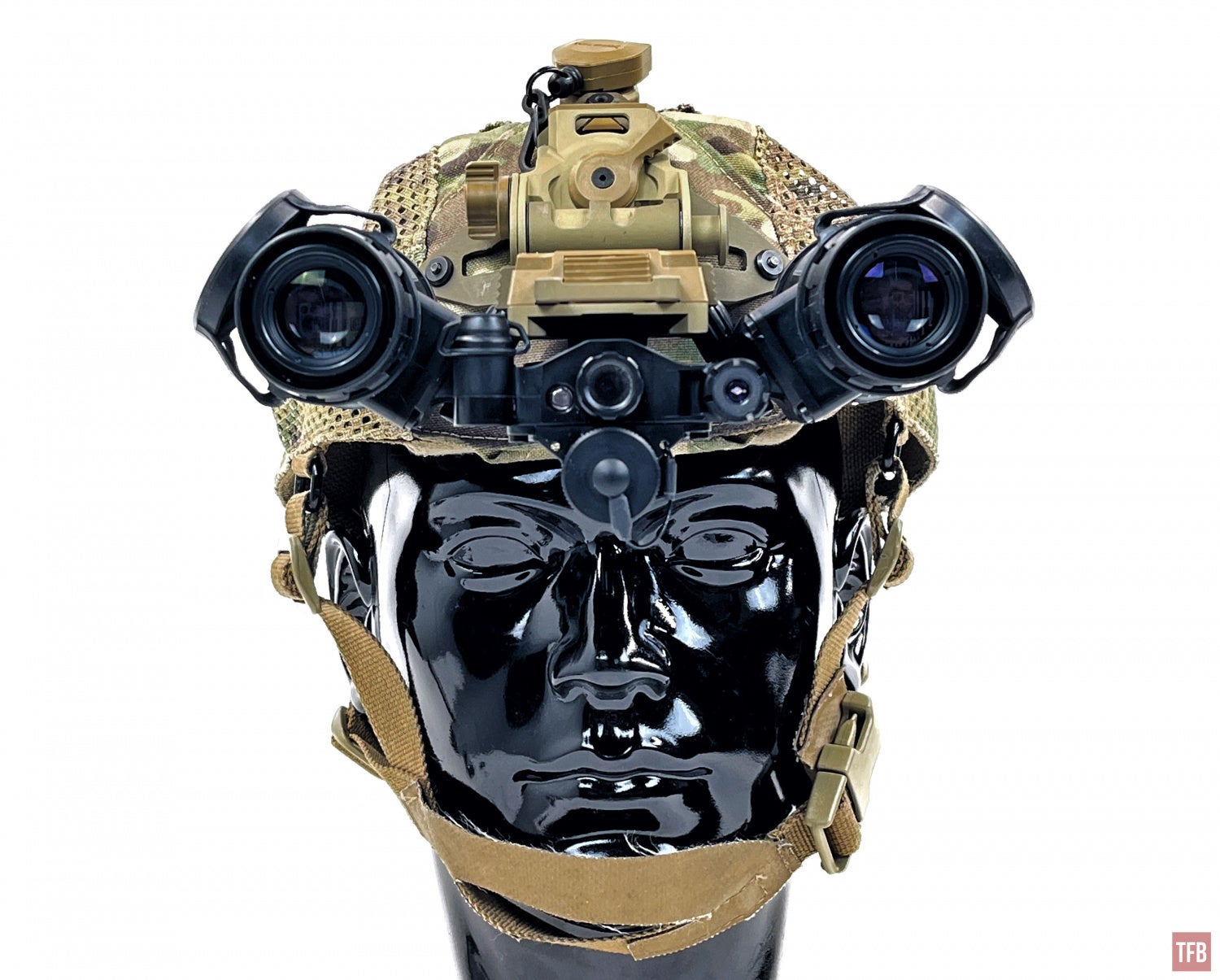
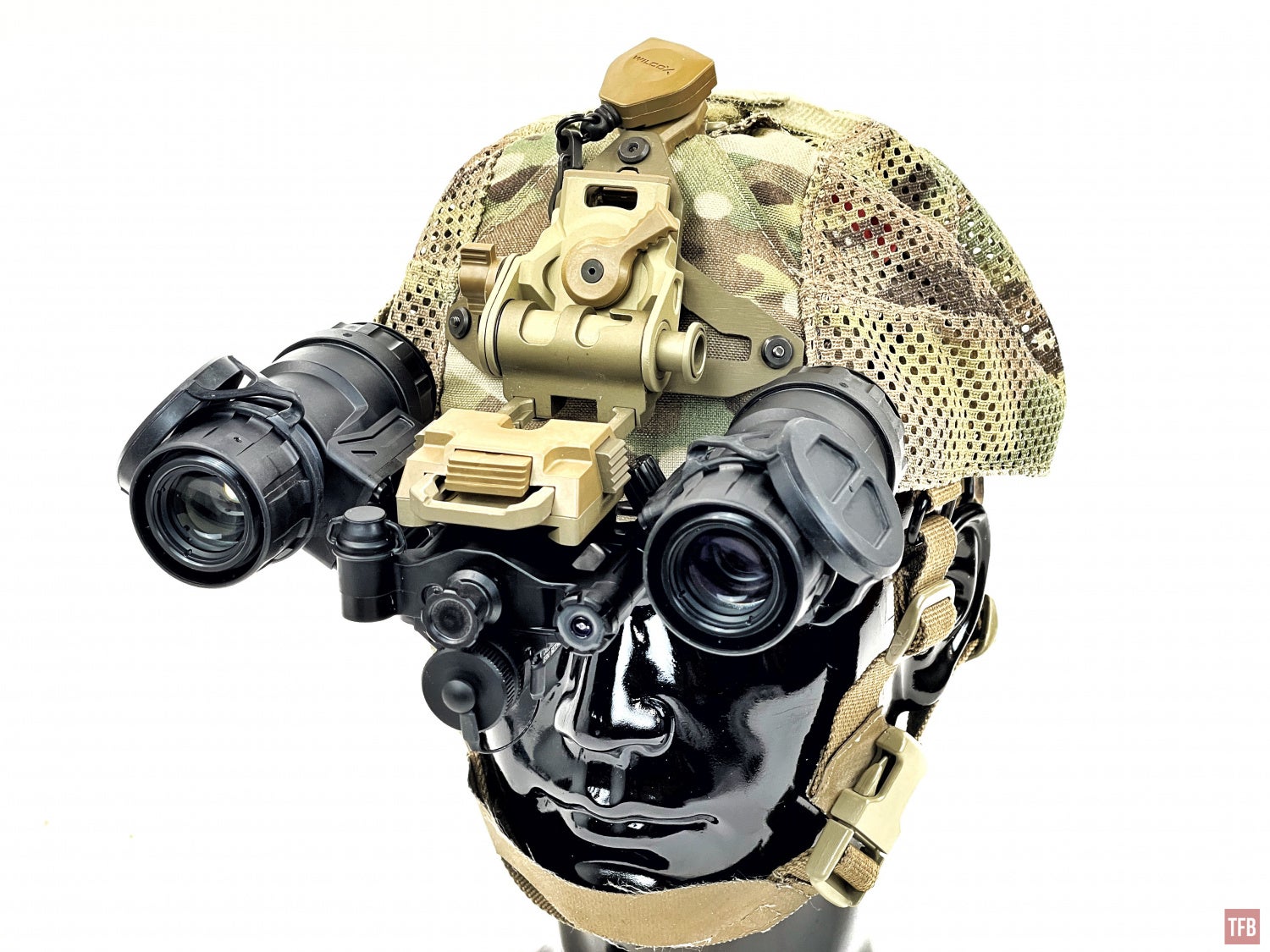
Just like the Elbit F5032, the BinoNV-C has the same features in the bridge. There is an IR illuminator. Double tap the power switch to activate it when the nods are on. The rotary switch is for controlling manual gain and just like the Elbit one, it changes gain in stepped intervals.
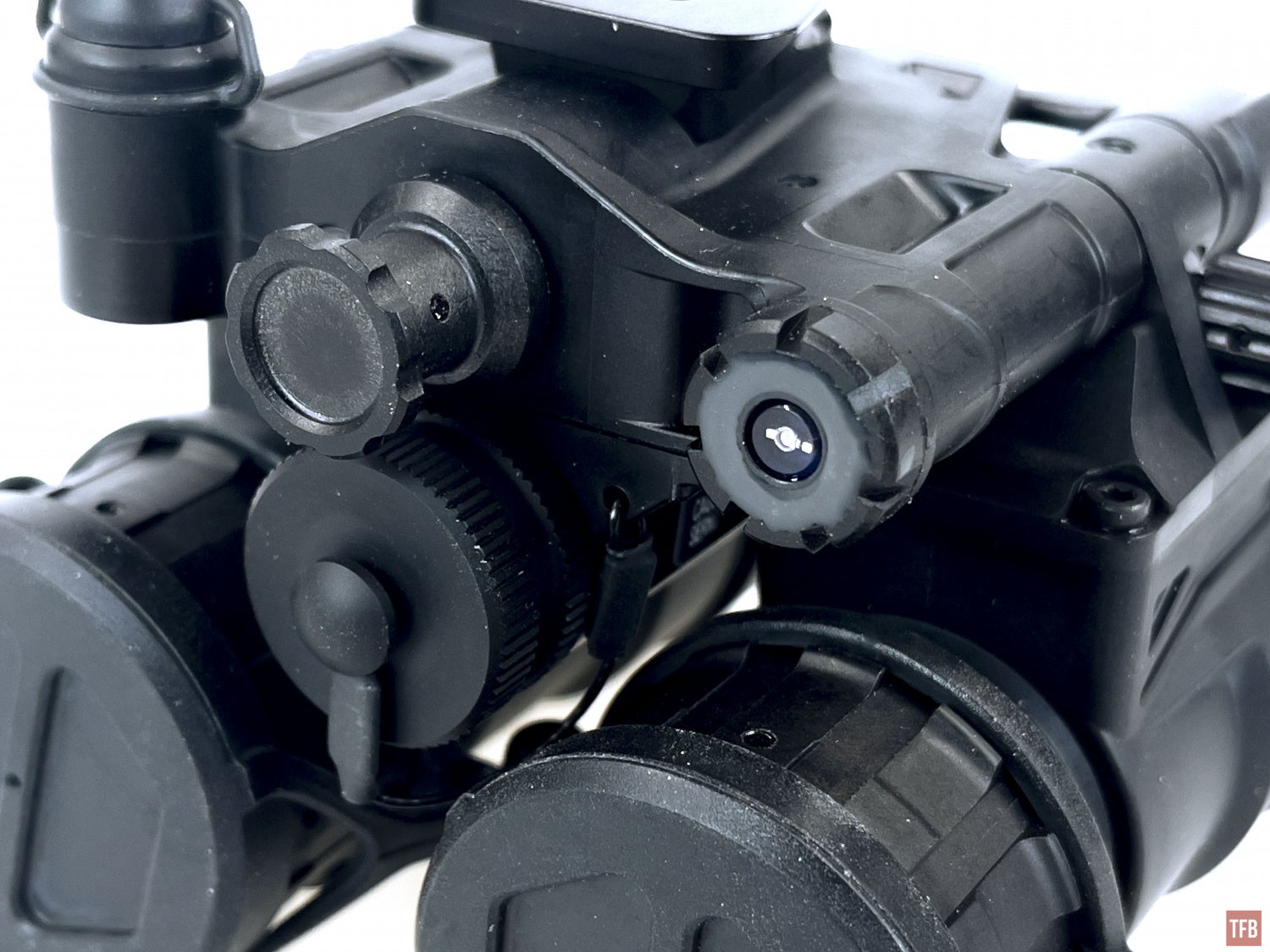
Oriented upwards is the remote battery pack port.
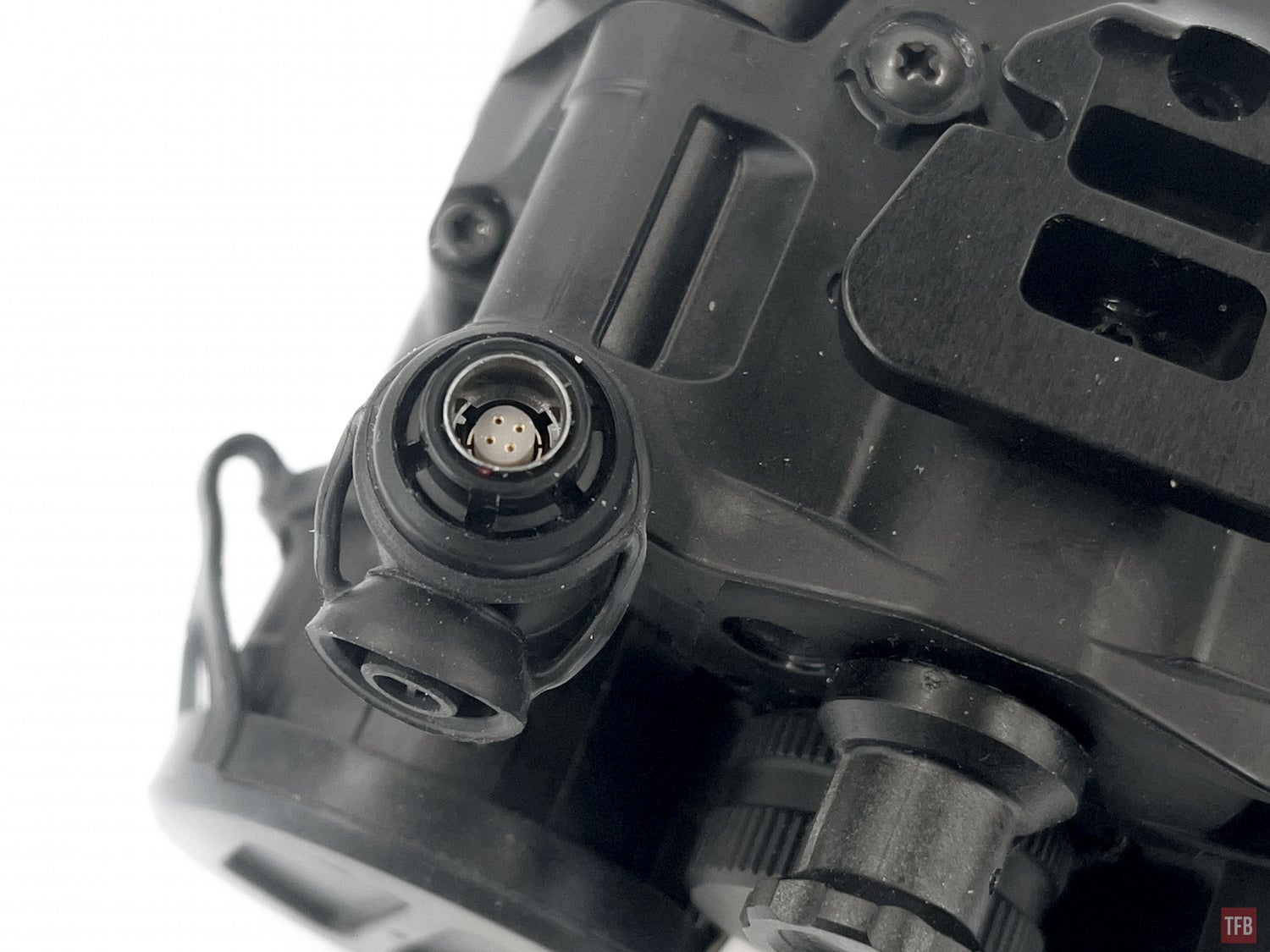
The BinoNV-C is extremely efficient with power. A lithium AA battery will power the goggle for 25 hours while an alkaline will run the goggle for just 15 hours. Still a reasonable amount of time that I do not think a remote battery pack is necessary.

Here is a picture in the manual that shows the BinoNV-C battery pack.
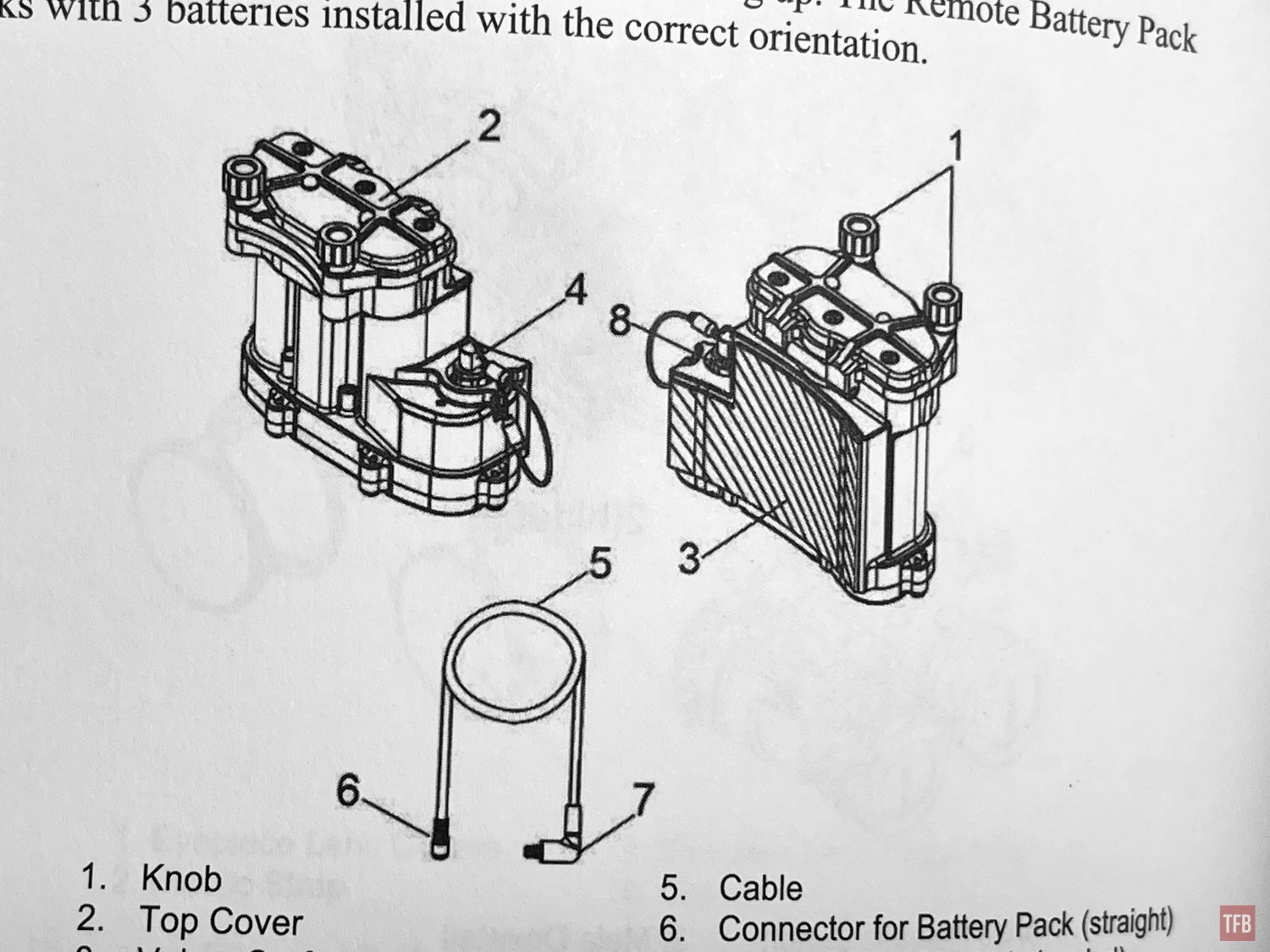
At the rear of the BinoNV-C are anchor points for bungees or retention cables. Pupillary adjustment knobs are on each side of the hinge arm.
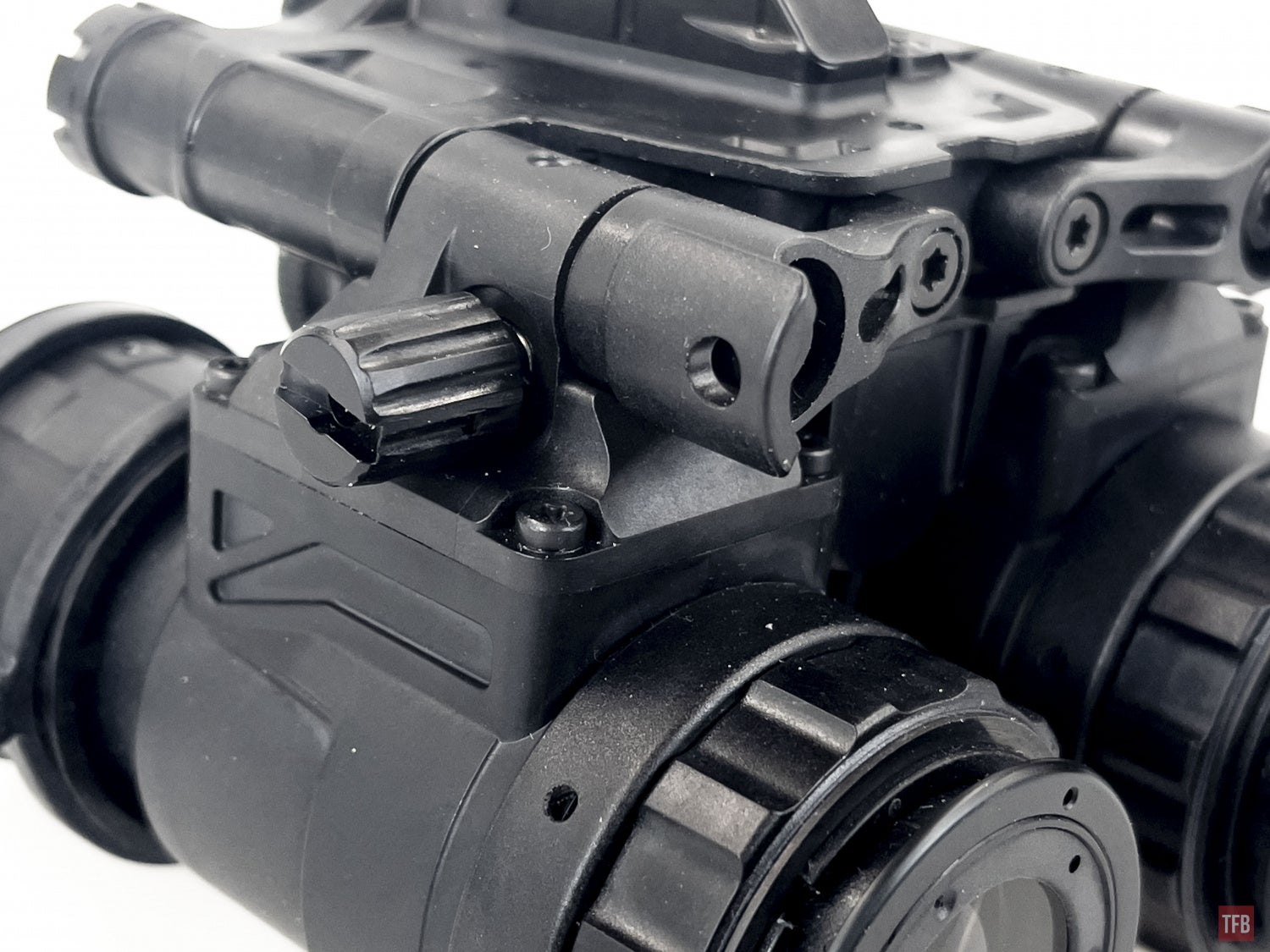
Even though the BinoNV-C is lightweight, it still has adjustable diopters for the eyepieces.

The BinoNV-C comes with objective lens covers that also function as day filters.

Due to the objective lens design, the day cap is tethered to the lens itself.
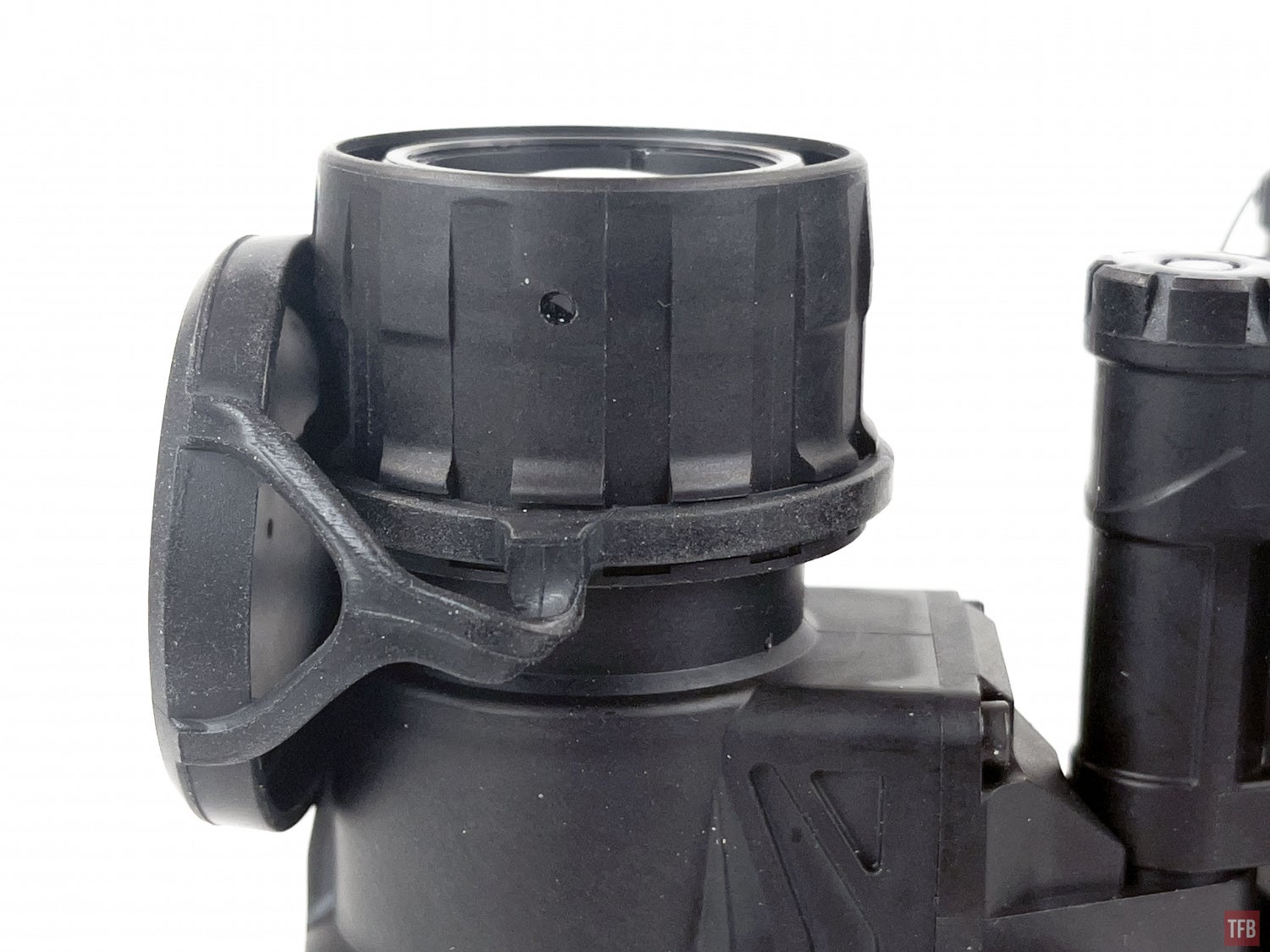
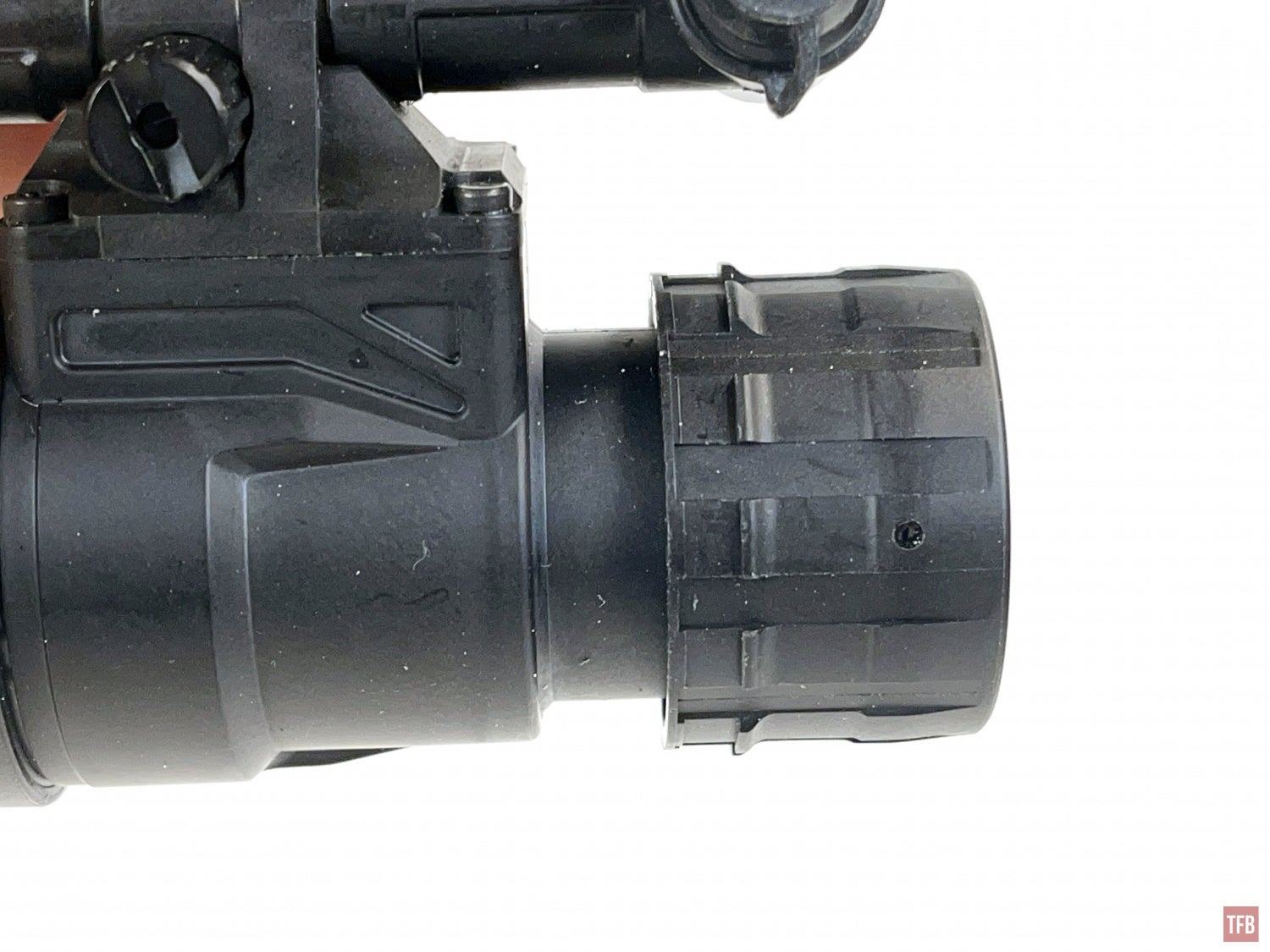
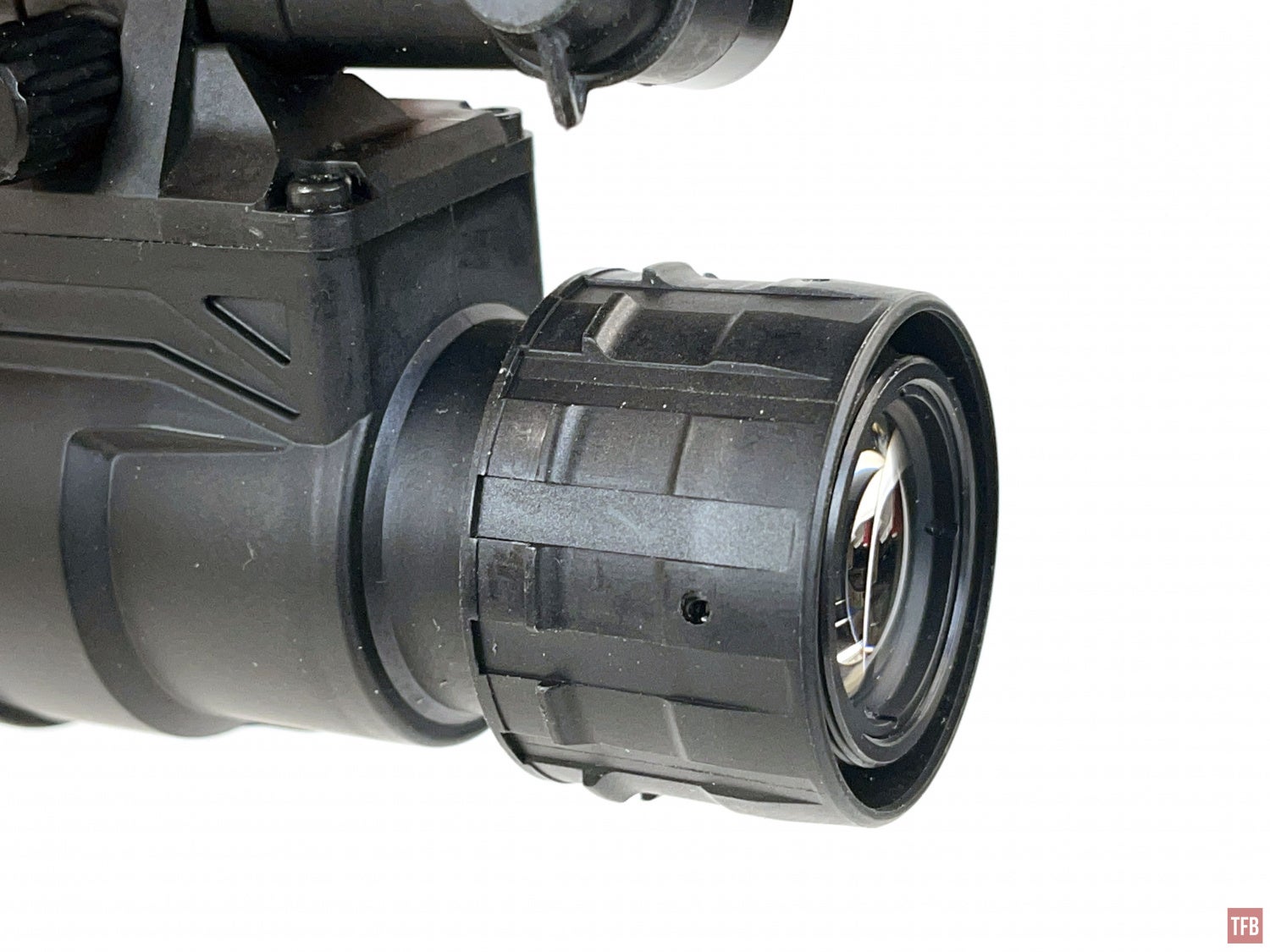
One downside to the BinoNV-C design is that it makes it challenging to use clip-on thermal imagers like a COTI or JerryC. I heard there is a dedicated mount for a COTI or possibly ECOTI but I have not seen one.
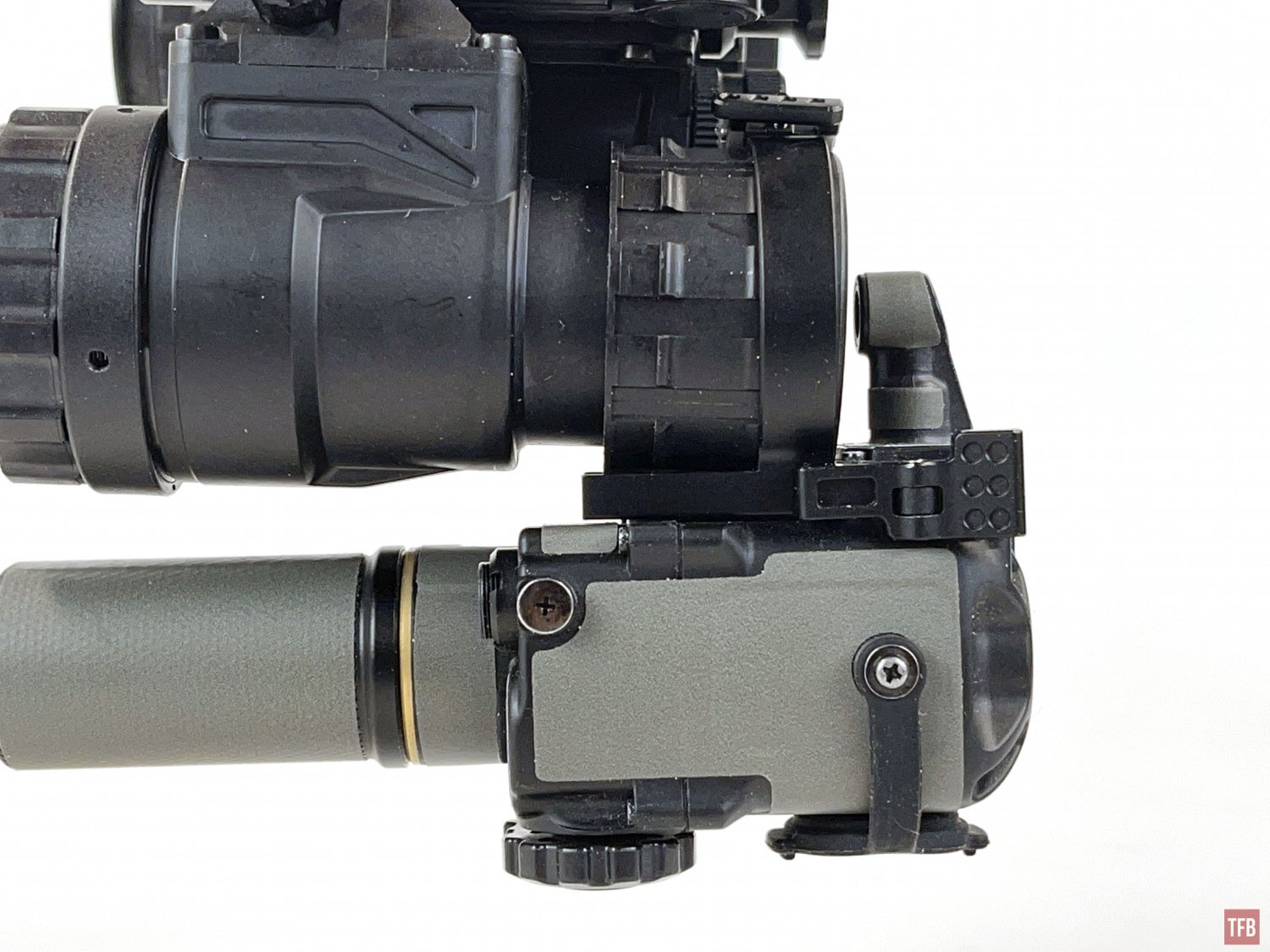
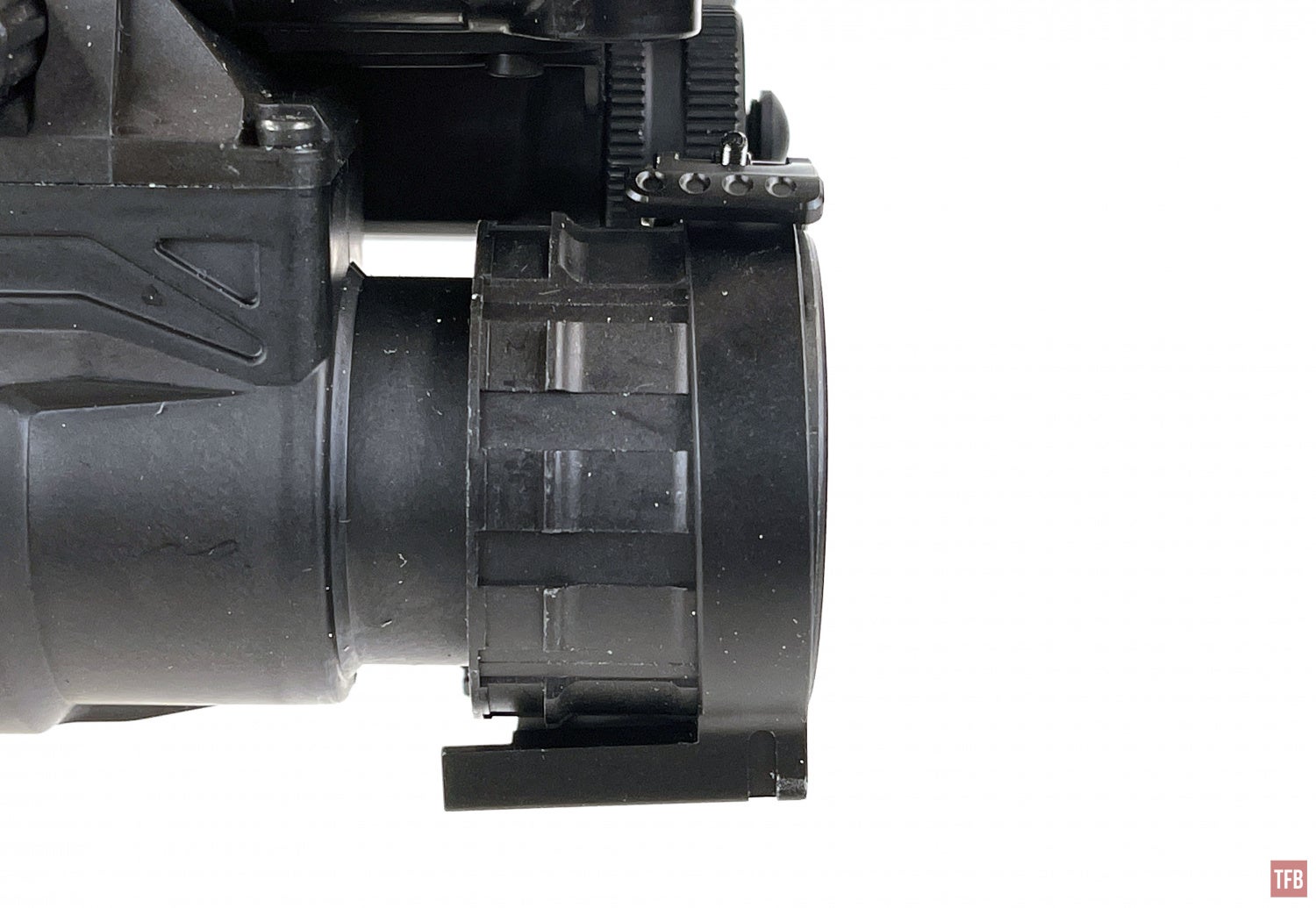
I had heard a rumor that 16mm tubes have less FOV than 18mm tubes. However, the BinoNV-C offers the same 40º FOV as regular night vision goggles. There are some drawbacks though. Since they use Photonis image intensifiers, they produce a very unique lens flare that is not related to the lens. See the photos below.

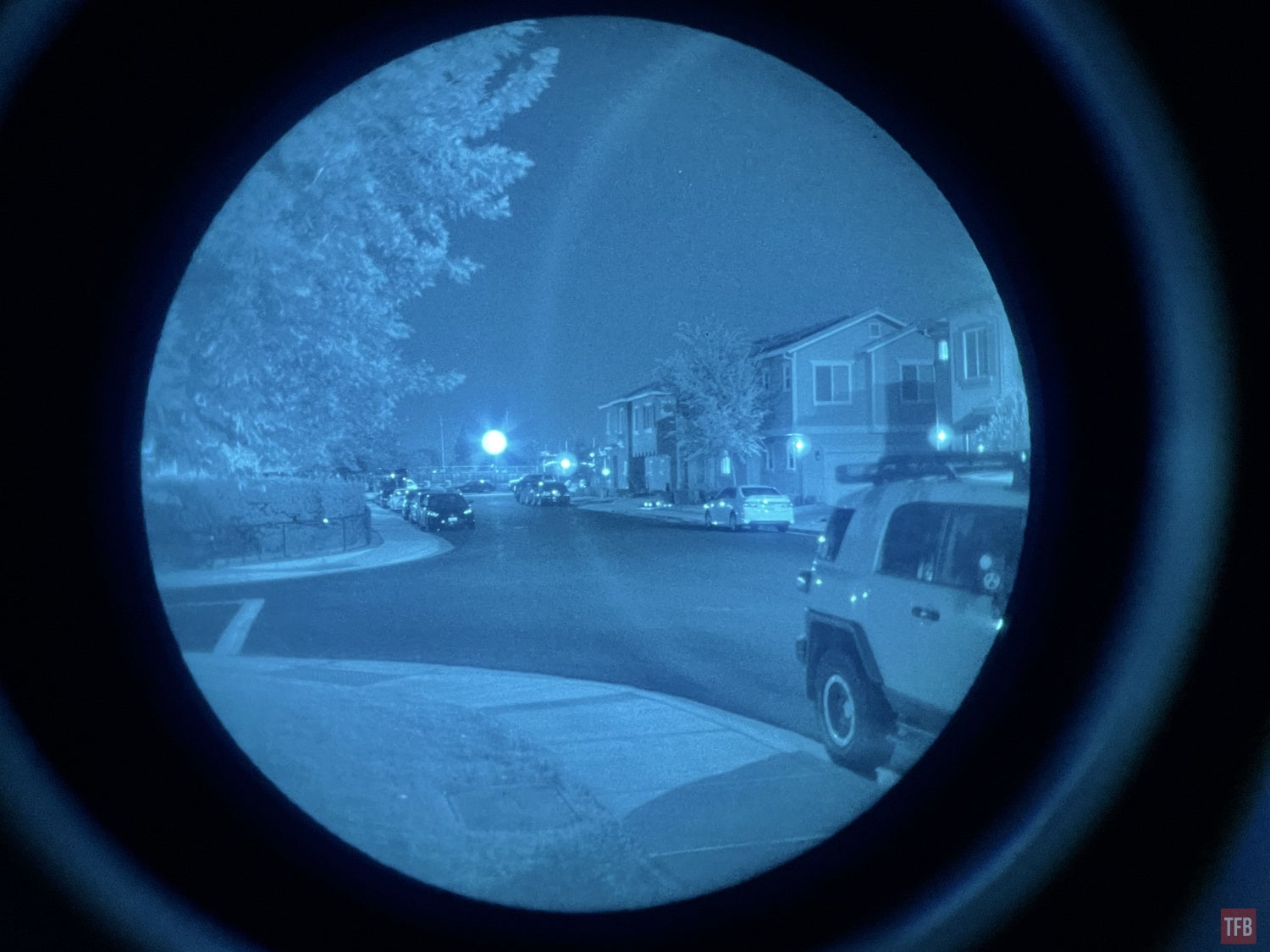
Another compromise is the size of the ocular lenses. The BinoNV-C has smaller eyepieces. While you still see 40º FOV, you need to have these closer to your eyes to see the whole picture.
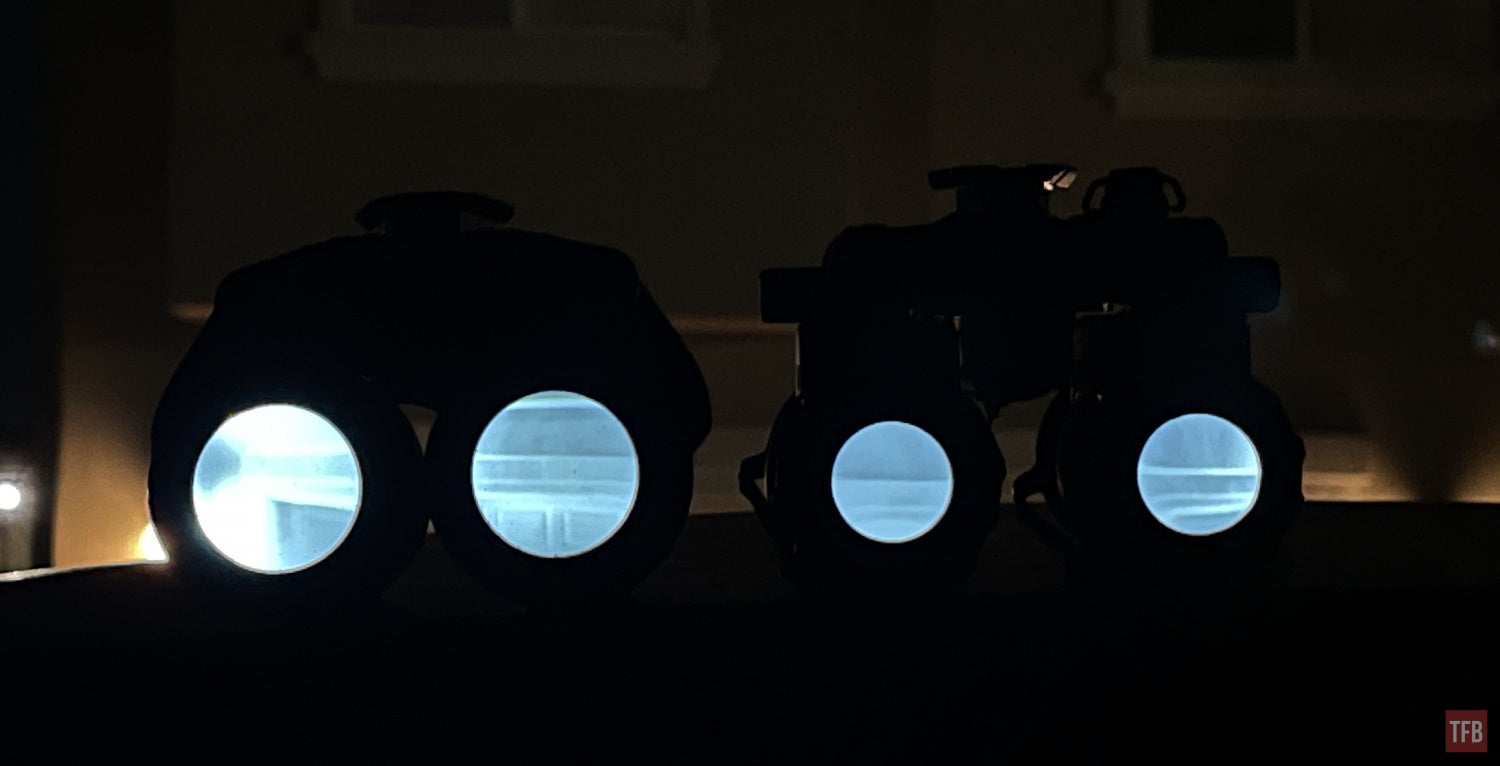
Nocorium Wraps
If you do opt to get one of the EOTech BinoNV-C, Nocorium has patterned off this set and is making them for the BinoNV-C. I am surprised how much coverage he was able to get since the BinoNV-C housing has some weird shapes and cuts in it.
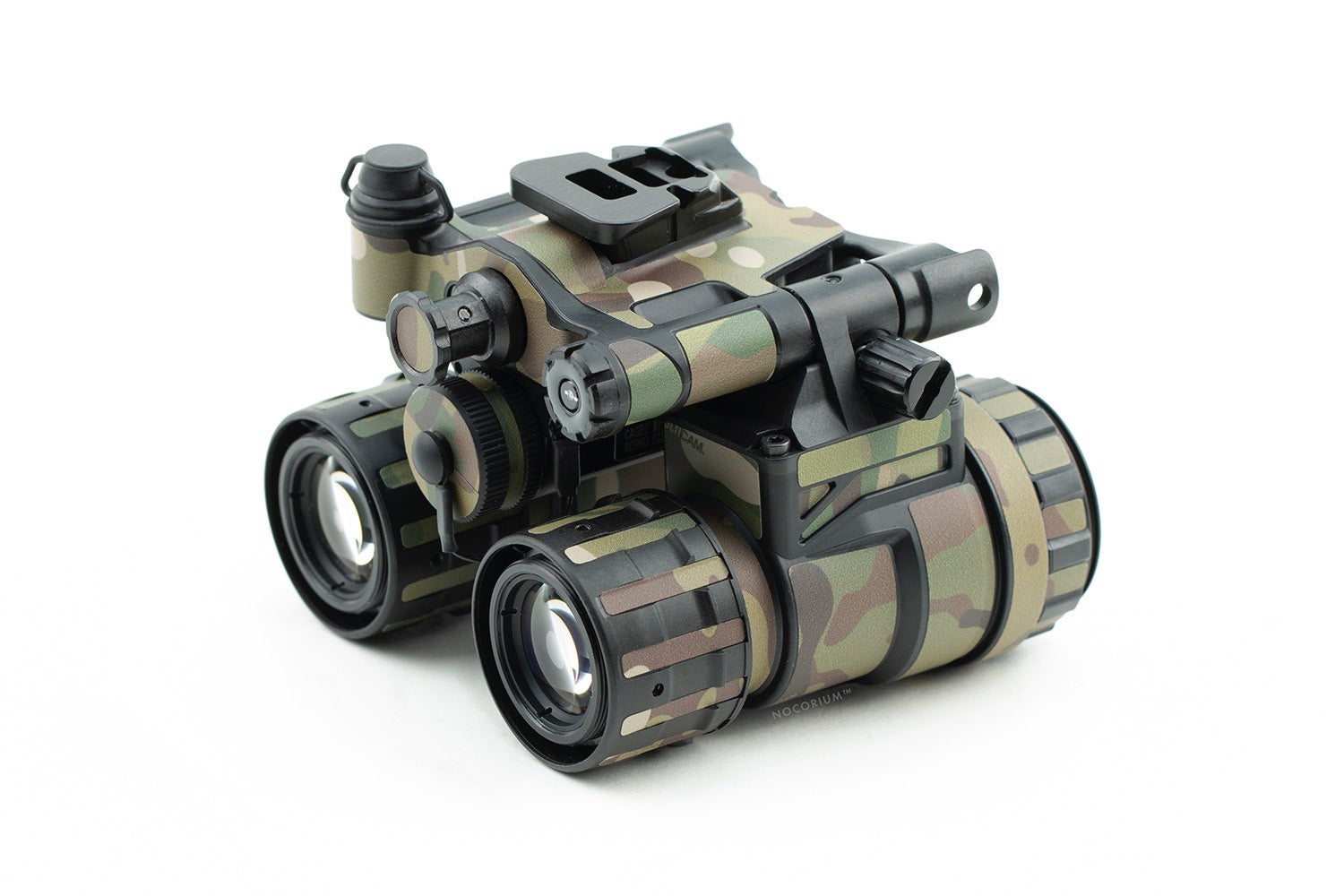
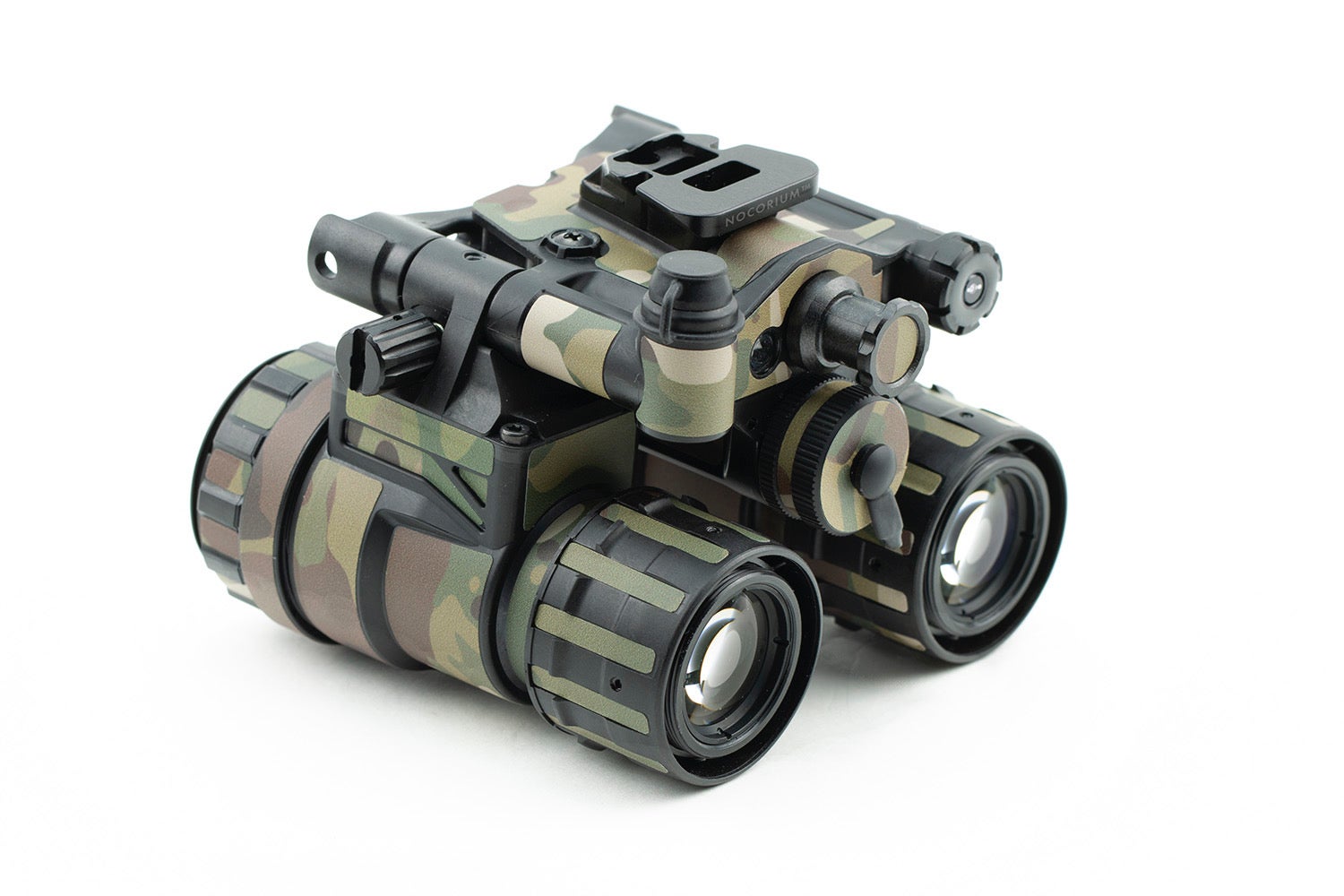
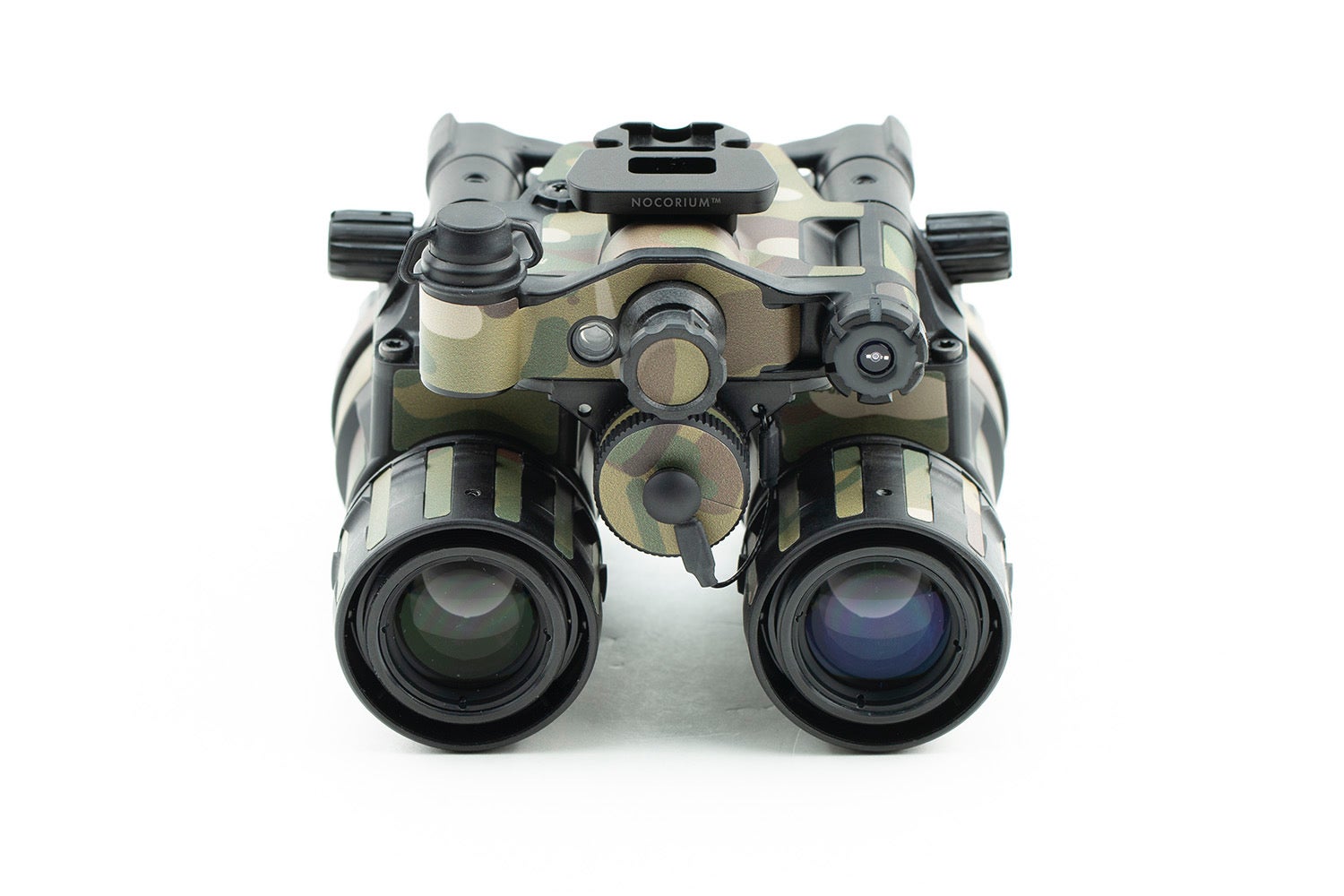
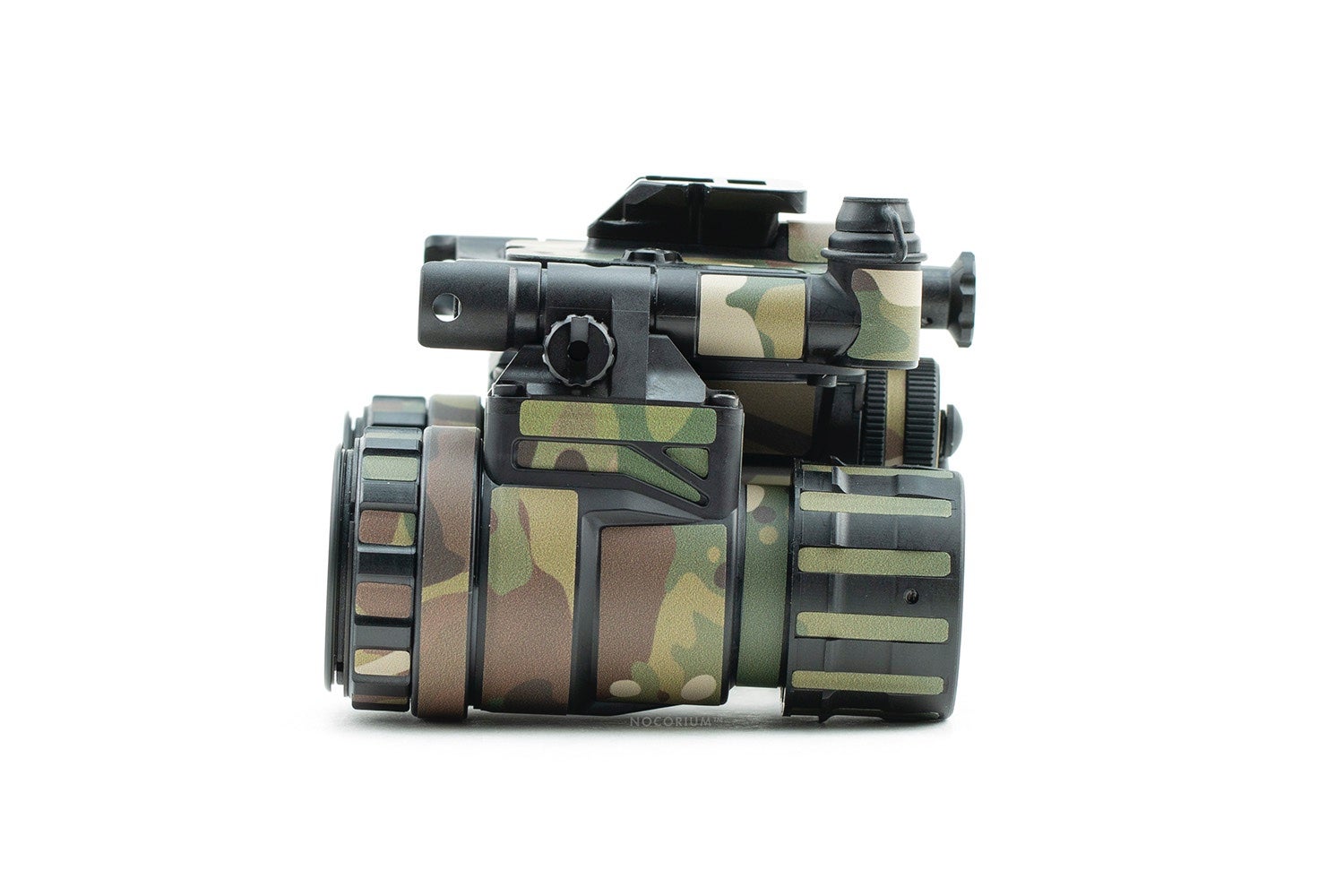
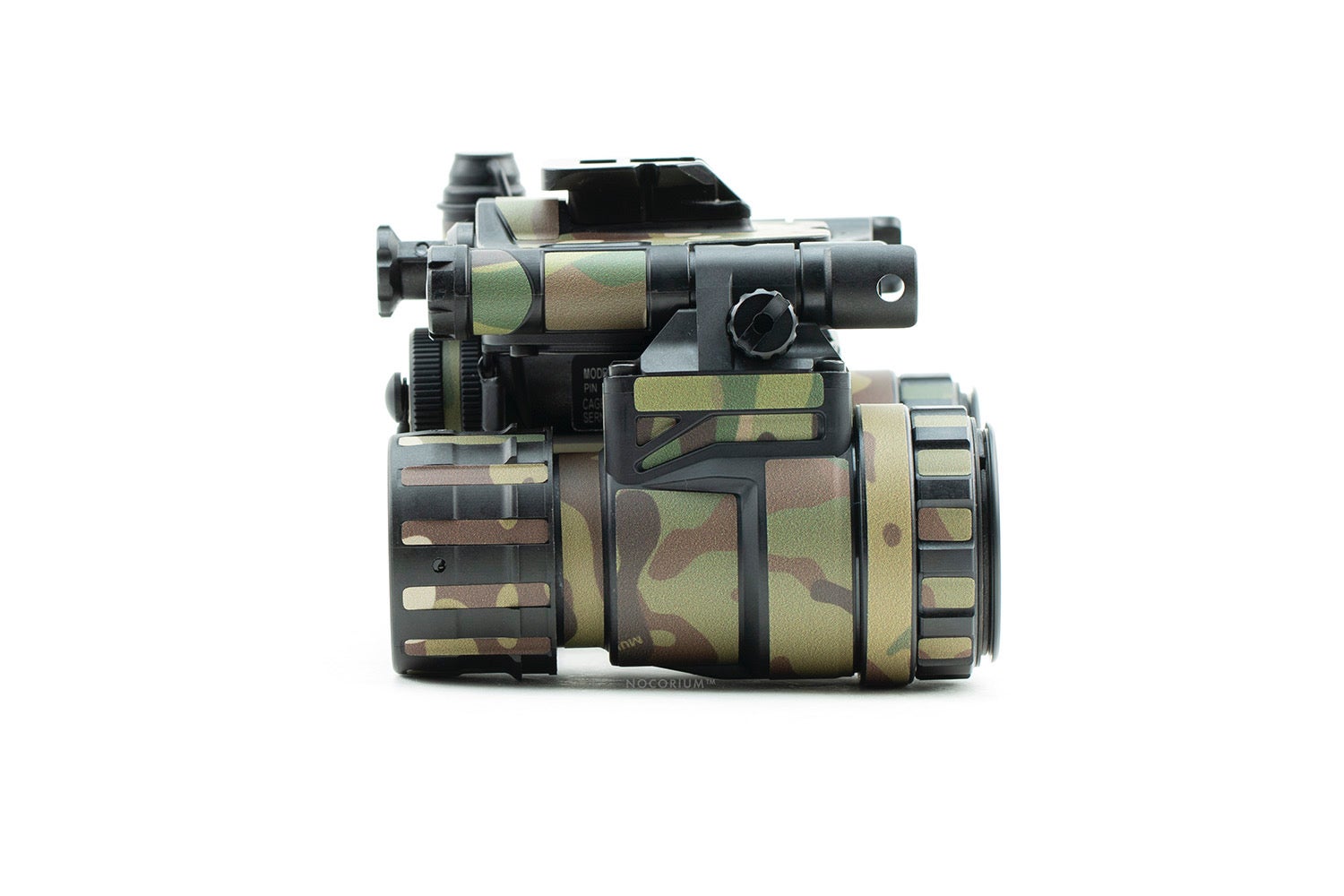
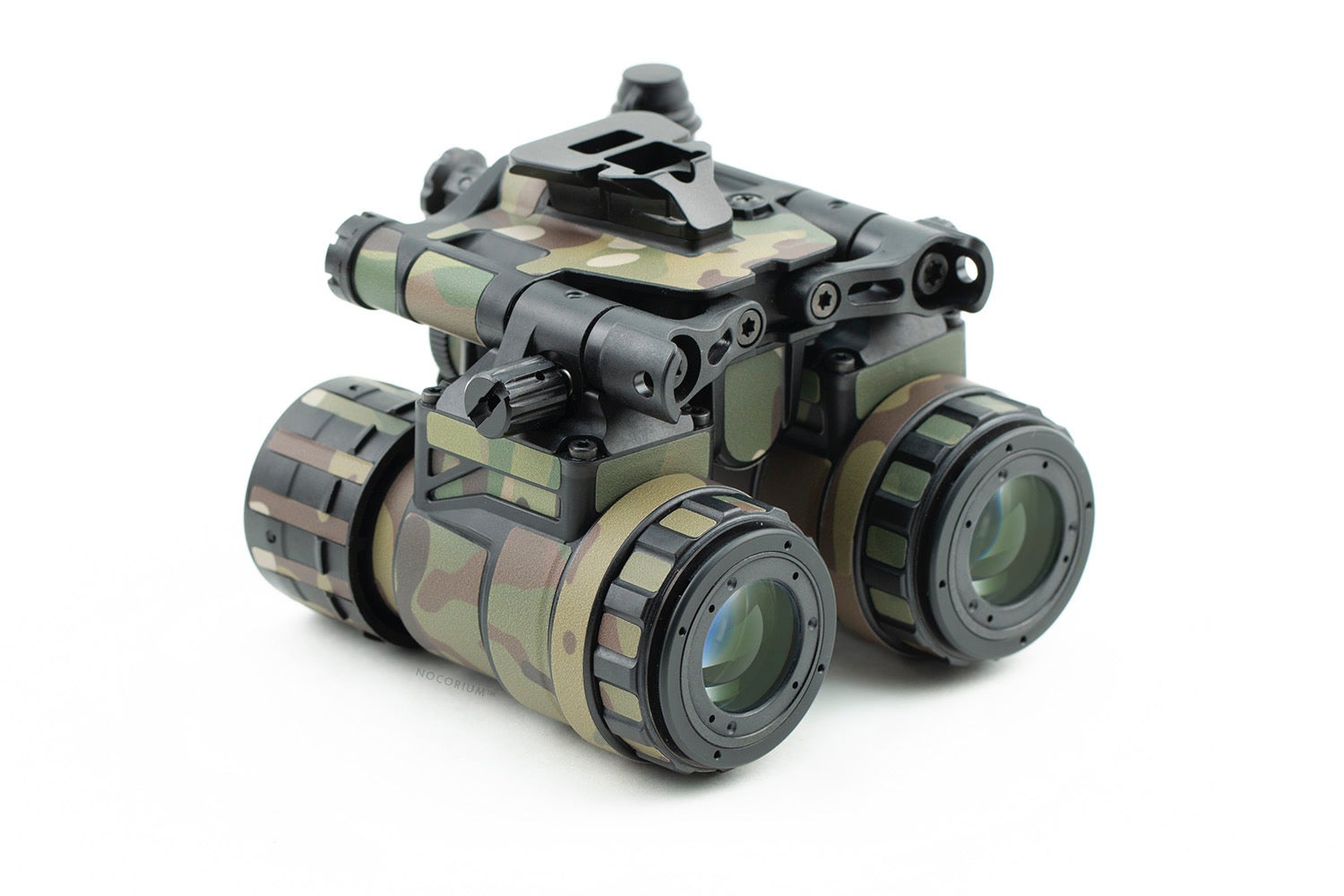
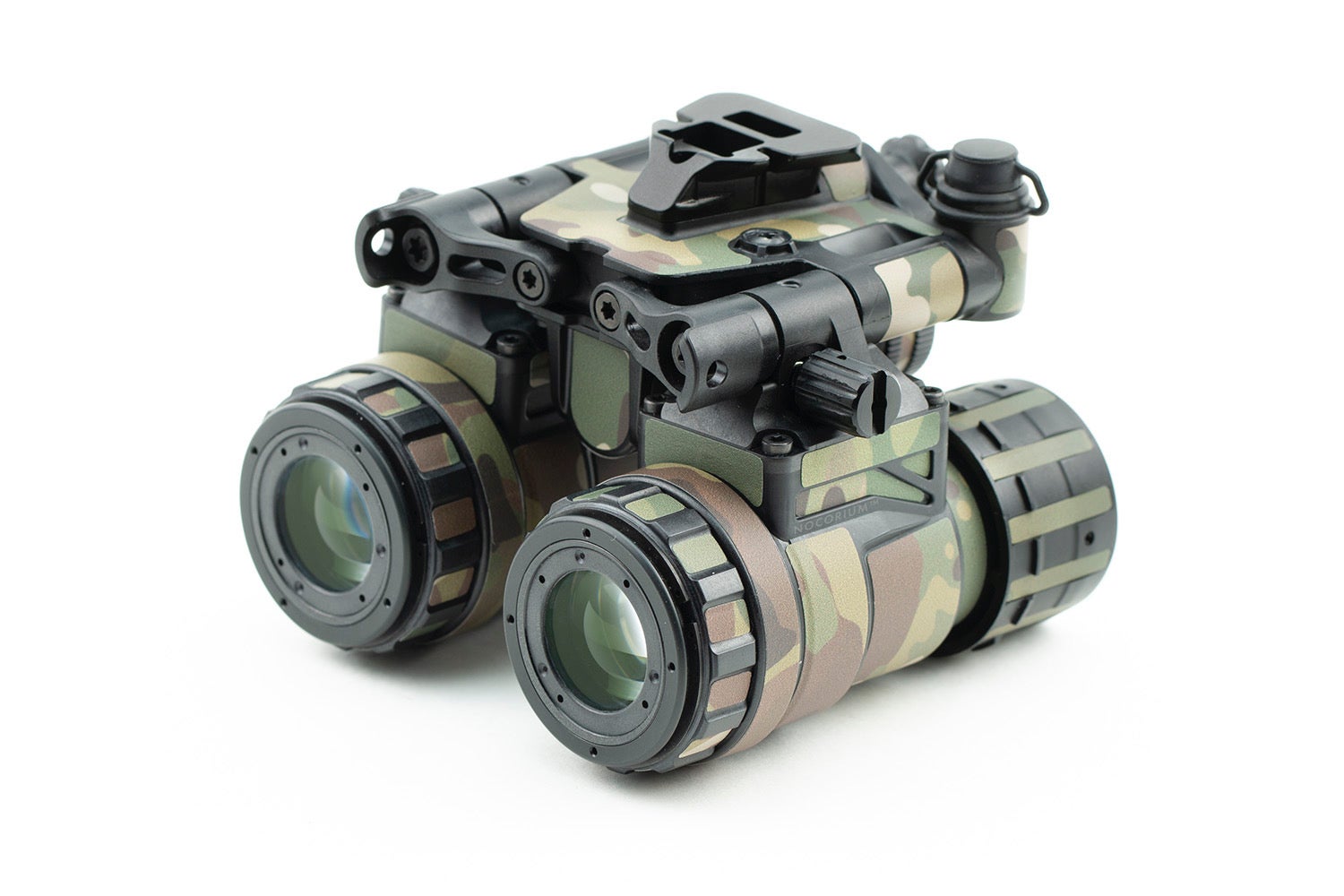
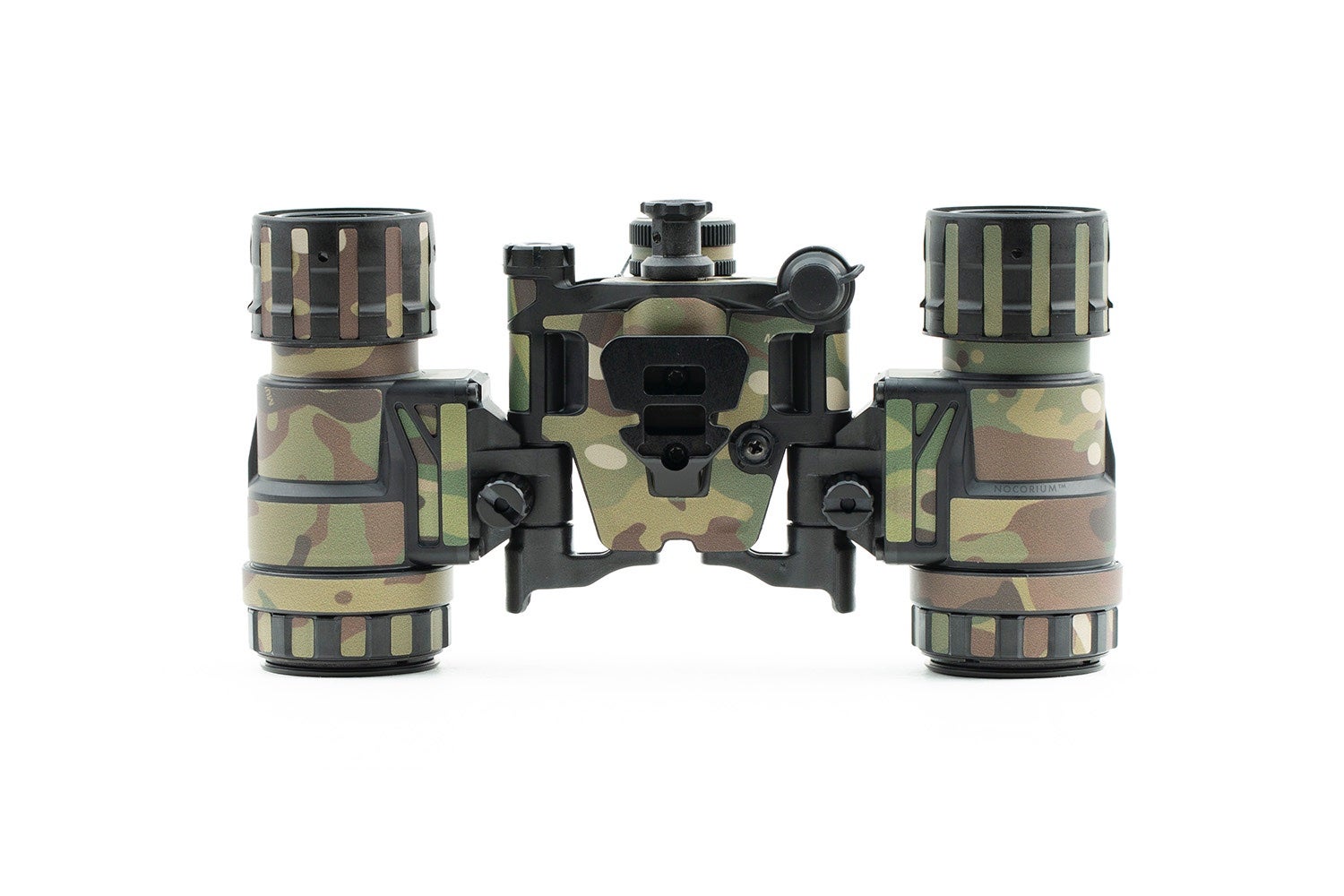
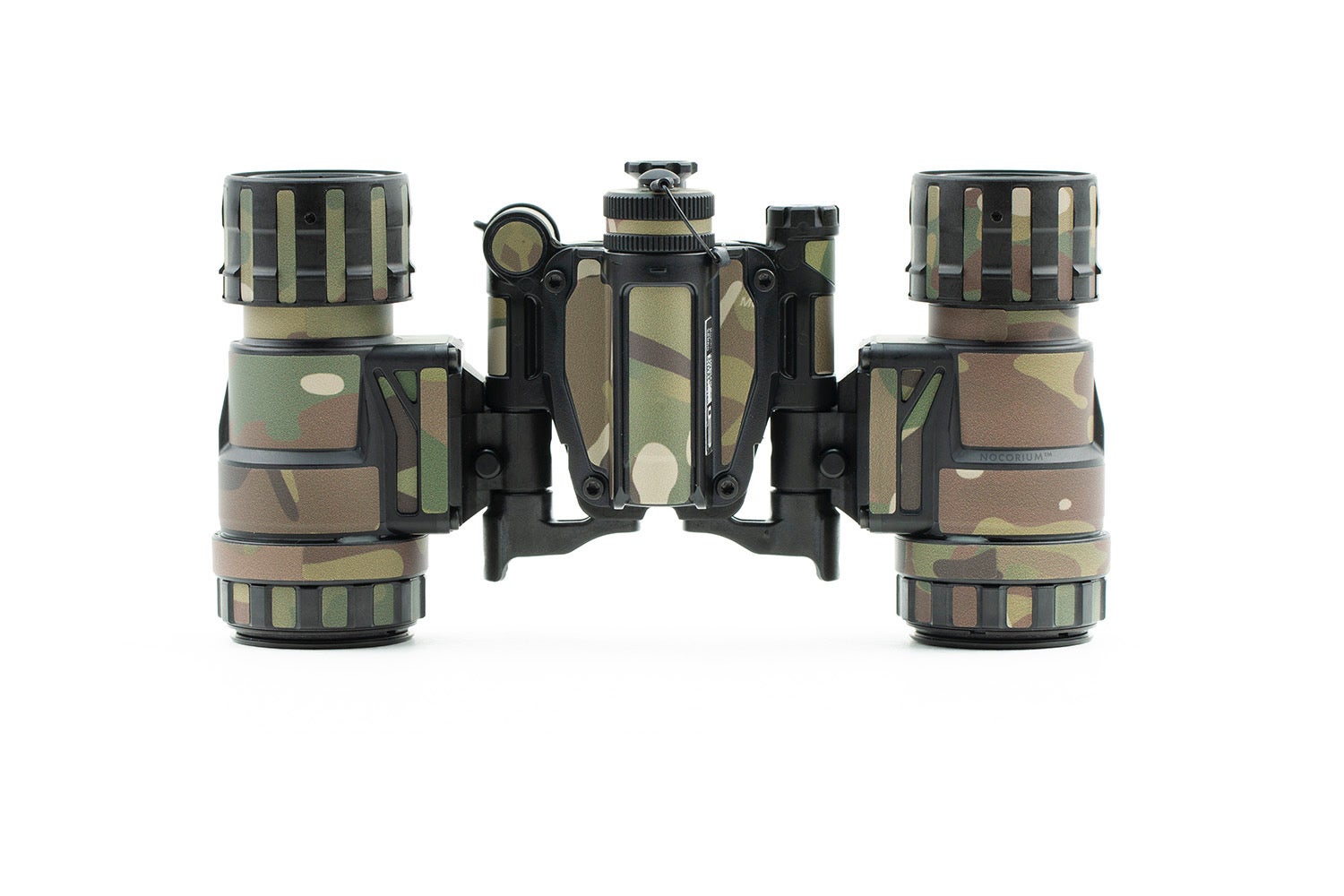
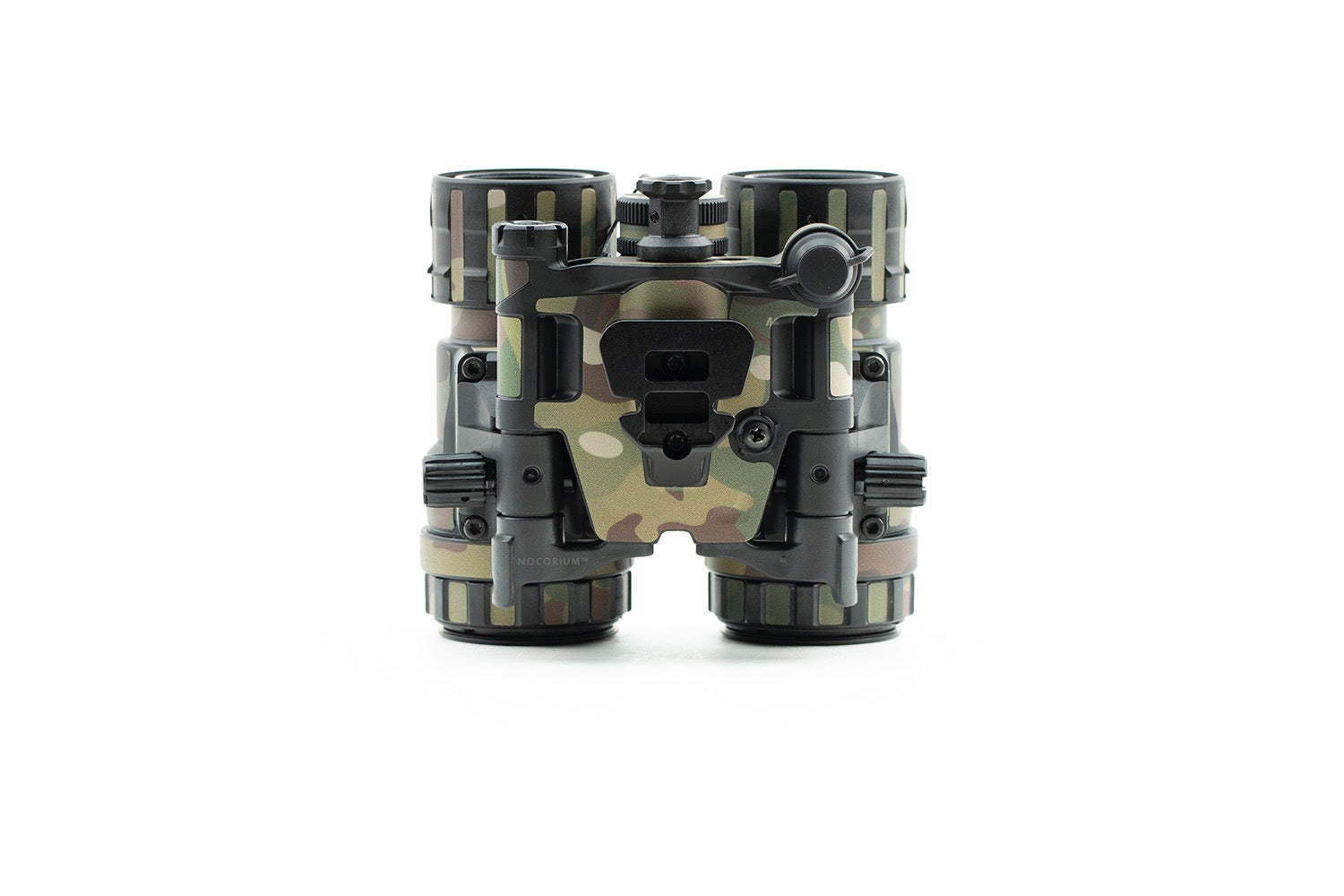
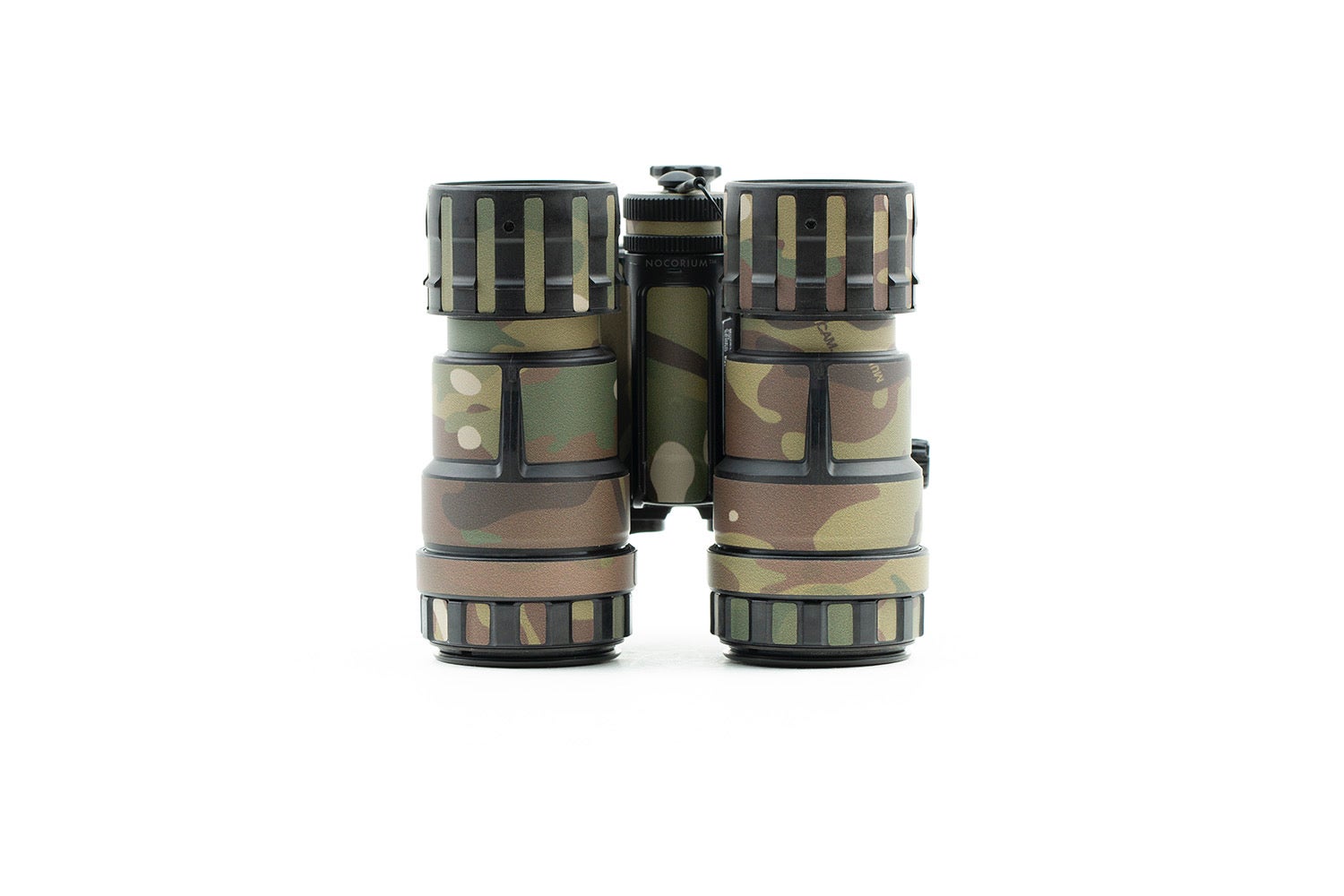
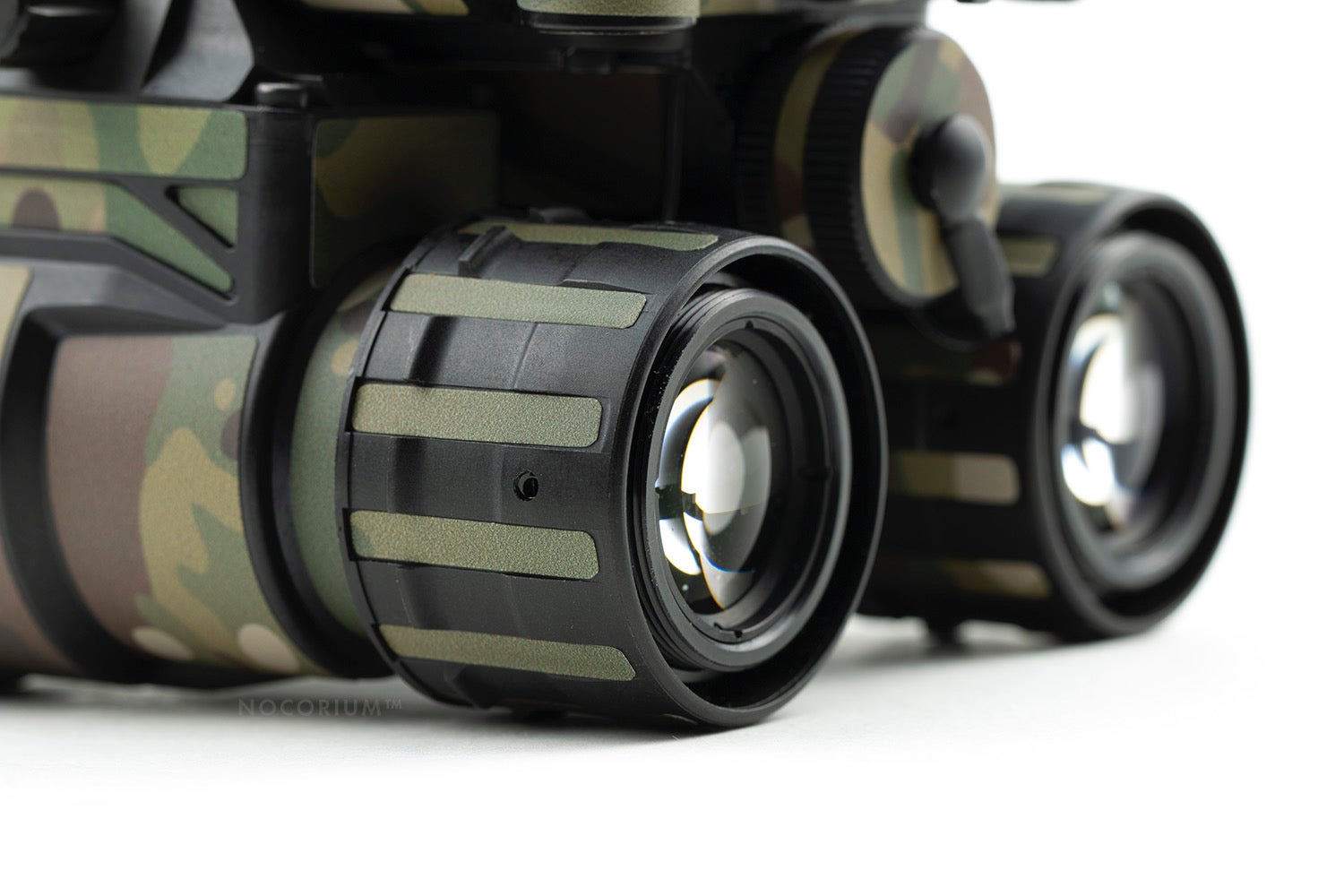
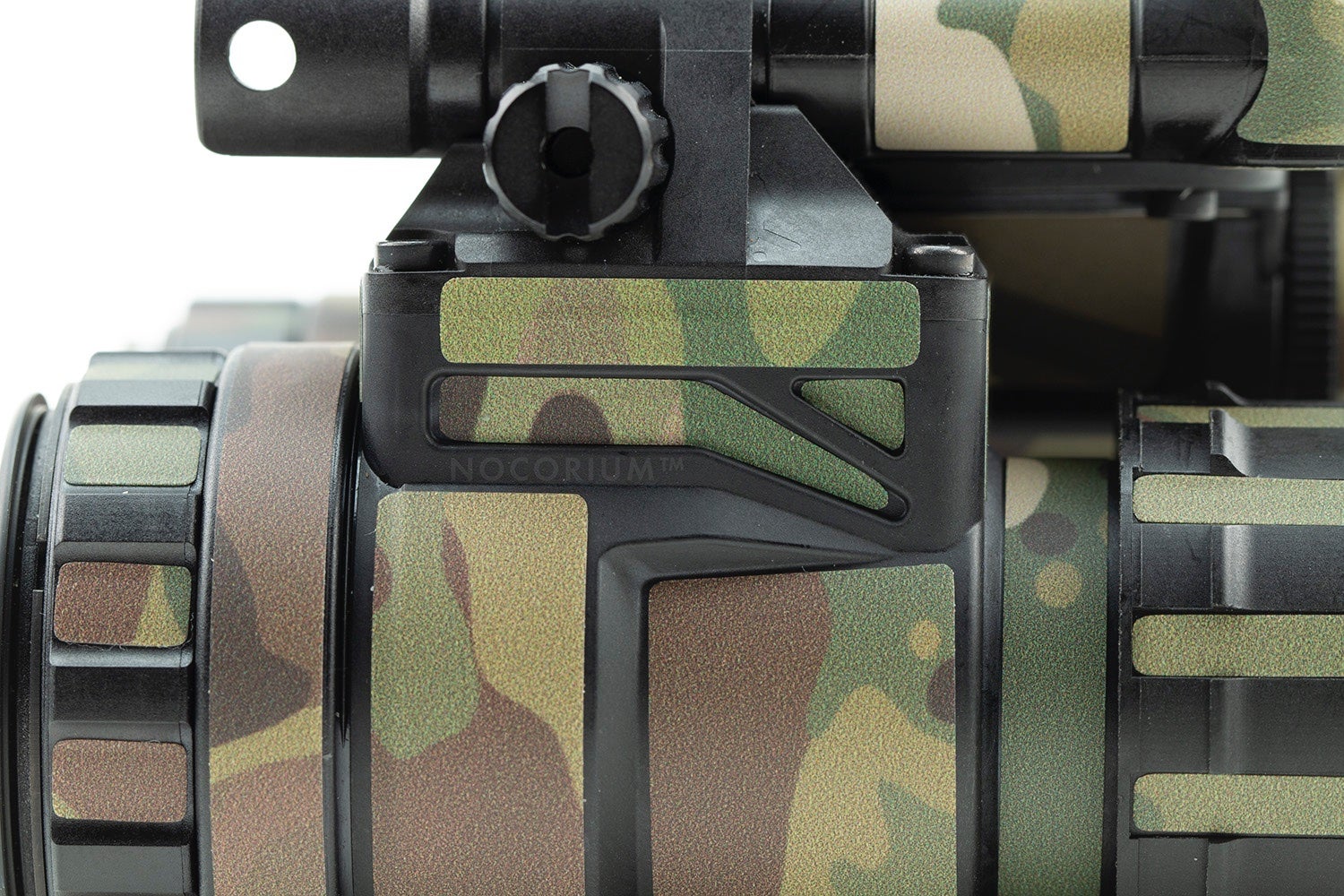
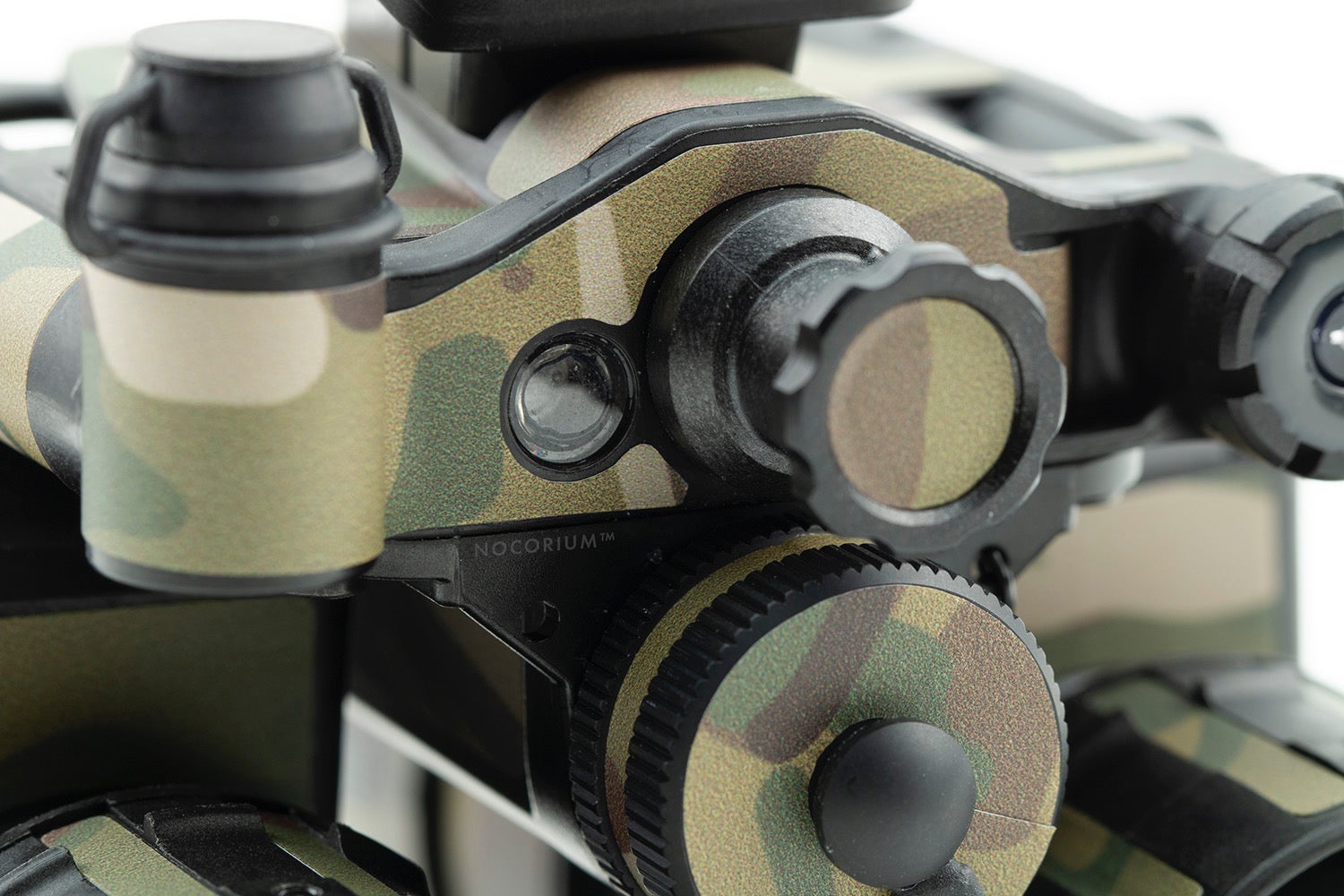
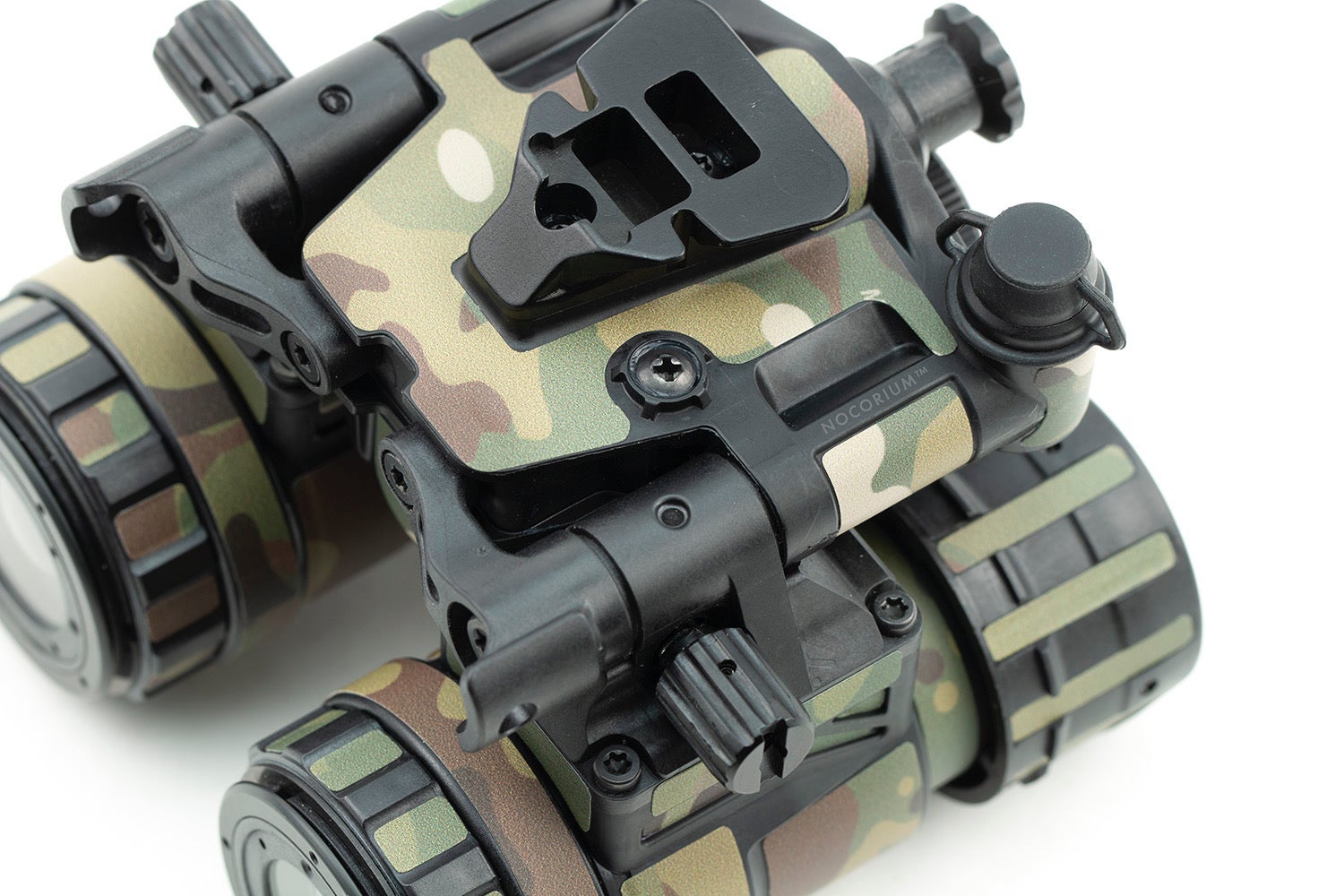
Final Thoughts On The EoTech BinoNV-C
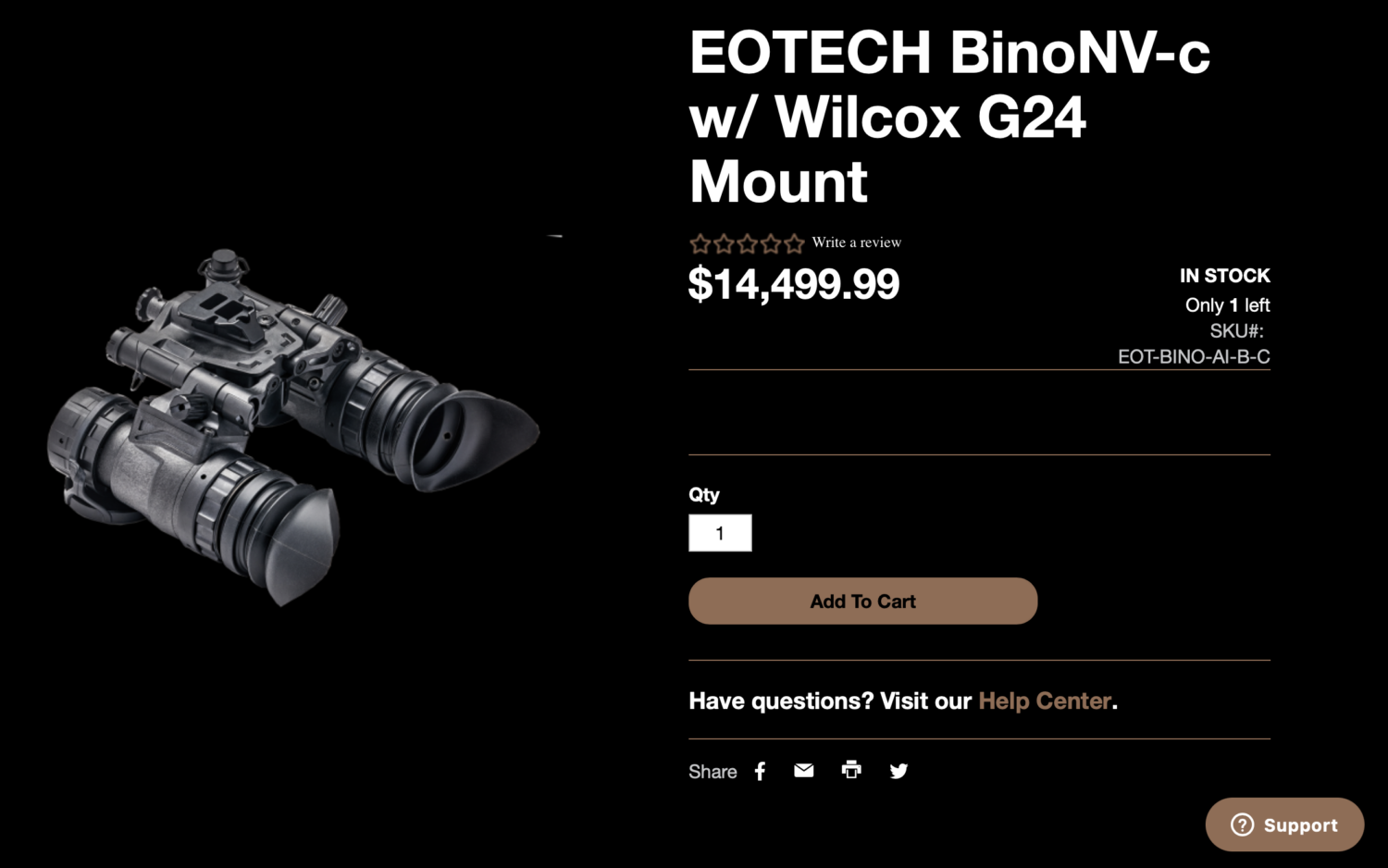
Photo by EOTech
The BinoNV-C is an interesting goggle. However, the price is really hard to swallow. It retails for $14,499 on EOTech’s website. This one was sent on loan from Weapon Outfitters. The price is just too much for the performance and functions of this goggle. For almost $13k you can get an L3Harris BNVD PVS-31A. They weigh just a little more but are still under 1 lb with battery. While the PVS-31A does not have a rear diopter they do come with a battery pack. For how much EOTech is charging, it should come with a battery pack.
The BinoNV-C has power shut off when the pods articulate but so do other commercial options like the Katana and DTNVS/DTNVG. Even the Elbit goggle has the same features just added weight for using 18m tubes and those can be bought for under $10k. If weight is critical you can get a Katana build with lightweight RPO lenses and you will be around 15.4 oz with rear diopter, PD stops, and pod shut off. The Photonis tubes are decent spec but nothing truly amazing. You can get better-performing Gen 3 L3 or Elbit tubes for less in a built goggle. So spending almost $13k on the BinoNV-C is a bit difficult for me to do. Your mileage may vary. If you want the smallest and current lightest binocular NV on the market, then the BinoNV-C is for you regardless of the cost. Thanks to Weapon Outfitters for letting me borrow this. For more information go to their website. They have special pricing for logged in customers.
We are committed to finding, researching, and recommending the best products. We earn commissions from purchases you make using the retail links in our product reviews. Learn more about how this works.
 Your Privacy Choices
Your Privacy Choices
